
ap

ap
An International Peer Reviewed Research Journal
New Appointments
Advisory Editors
Edward Gerjuoy
has a 1942 Ph.D. in theoretical physics from the University of
California at Berkeley, where J. Robert Oppenheimer was his thesis
adviser. Presently he is Professor of Physics Emeritus at the
University of Pittsburgh, where he was appointed Professor in 1964
and became Emeritus in 1982. He is the author of over 120 physics
research publications and more than 50 non-technical publications
on various physics and public policy topics. In the past Professor
Gerjuoy published predominantly, though not entirely, in atomic
physics collision theory. In the last ten years, however, he has
been devoting his research time solely to various problems related
to quantum computing/information theory. During his entire career,
moreover, he has been a member (and in some years Chair) of
numerous American Physical Society (APS) Committees, including,
e.g.: APS Council, its governing body: Panel on Public Affairs;
Audit Committee; and the Committee on the International Freedom of
Scientists (CIFS).

His service on CIFS, which he twice chaired, reflects his life-long passionate personal devotion to the protection of the human rights of scientists everywhere.
Francis
T. S. Yu
Emeritus
Evan Pugh (University)
Professor
of Electrical Engineering
Penn
State University3329
Avenida
Hacienda Escondido, CA 92029
Tel:
760-489-1638;fty1@psu.edu
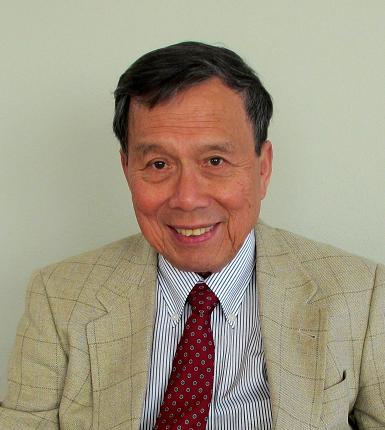
New Member of Editorial
Board
Ji Won Kim
Professor, Department of Photonics and
Nanoelectronics
Hanyang University ERICA
55 Hanyangdaehak-ro, Ansan-si, Hyunggi-do,
Republic of Korea
Email: jwk7417@hanyang.ac.kr
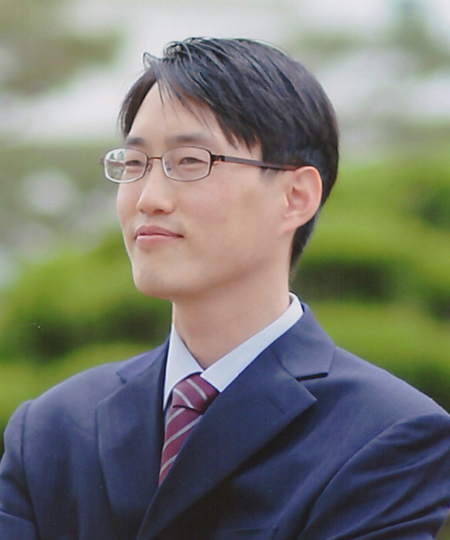
Ji Won Kim received the Ph.D degree in physics from KAIST, Taejon, Korea in 2000. From 2000 to 2004, he was with the Nonlinear optics lab in KAIST, developing and characterizing nonlinear optical materials and frequency converted lasers. From 2004 to 2011, he was a Research Fellow in the Optoelectronics Research Centre, University of Southampton, U.K. During this period, he has worked on development of high power fiber lasers, solid state lasers, and hybrid lasers. In 2011, he joined in Hanyang University ERICA as an associate professor, and now a professor in department of Photonics and Nanoelectronics. His current research interests are study of laser phenomena and development of a novel high power laser system including high power cladding-pumped fiber lasers and solid state lasers, hybrid lasers, optical vortex lasers, frequency converted lasers, and laser applications. He was awarded ‘Young Scientist Award’ at the international conference of Crystal Growth (Japan) in 2002 and ‘Best Poster Award’ at the Defence Technology Workshop (UK) in 2008. He has published over 50 peer-reviewed international journal papers as a first/corresponding author.
Yongsup Park received B.S. in Physics Education and M.S. in Physics from Seoul National University, Korea, in 1986 and 1988, respectively. He received Ph.D. in Physics from Northwestern University in U.S.A. in 1994. He worked as a postdoc in University of Rochester until 1996. From 1997 to 2006 he was initially a research scientist and later a group leader at Korea Research Institute of Standards and Science (KRISS) in Daejeon, Korea. From 2006, he is a Professor of Physics in Kyung Hee University in Seoul, Korea.
He authored more than 100 research articles in the field of surface science, photoelectron spectroscopy, magnetic nanostructures, and organic electronic devices and their interfaces. He is also interested in developing experimental techniques such as novel inverse photoemission spectroscopy.
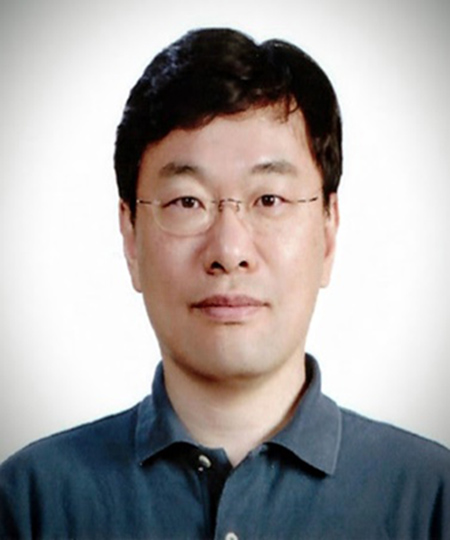
He served as a Guest Editor of a special issue of Surface Science and currently is a Member of the Editorial Board of New Physics: Sae Mulli.
Salah S A Obayya joined Zewail City of Science and Technology (ZC) in 2012 where he is now Chair Professor and Founding Director of Center for Photonics and Smart Materials (CPSM). He occupied the positions of the Vice Chairman of ZC and Director-General of Research Institutes at the same institution. Prior to Zewail City, he took up several academic posts at Brunel University UK (tenured Associate Professor, 2002), University of Leeds, UK (tenured Professor, 2006) and University of South Wales, UK (tenured Chair Professor, 2008) where he was the Founding Director of Photonics and Broadband Communications (PBC) Research Center and also he was the Director of Postgraduate Programs at the same institution. In May 2006, he has been naturalised as “British” citizen.
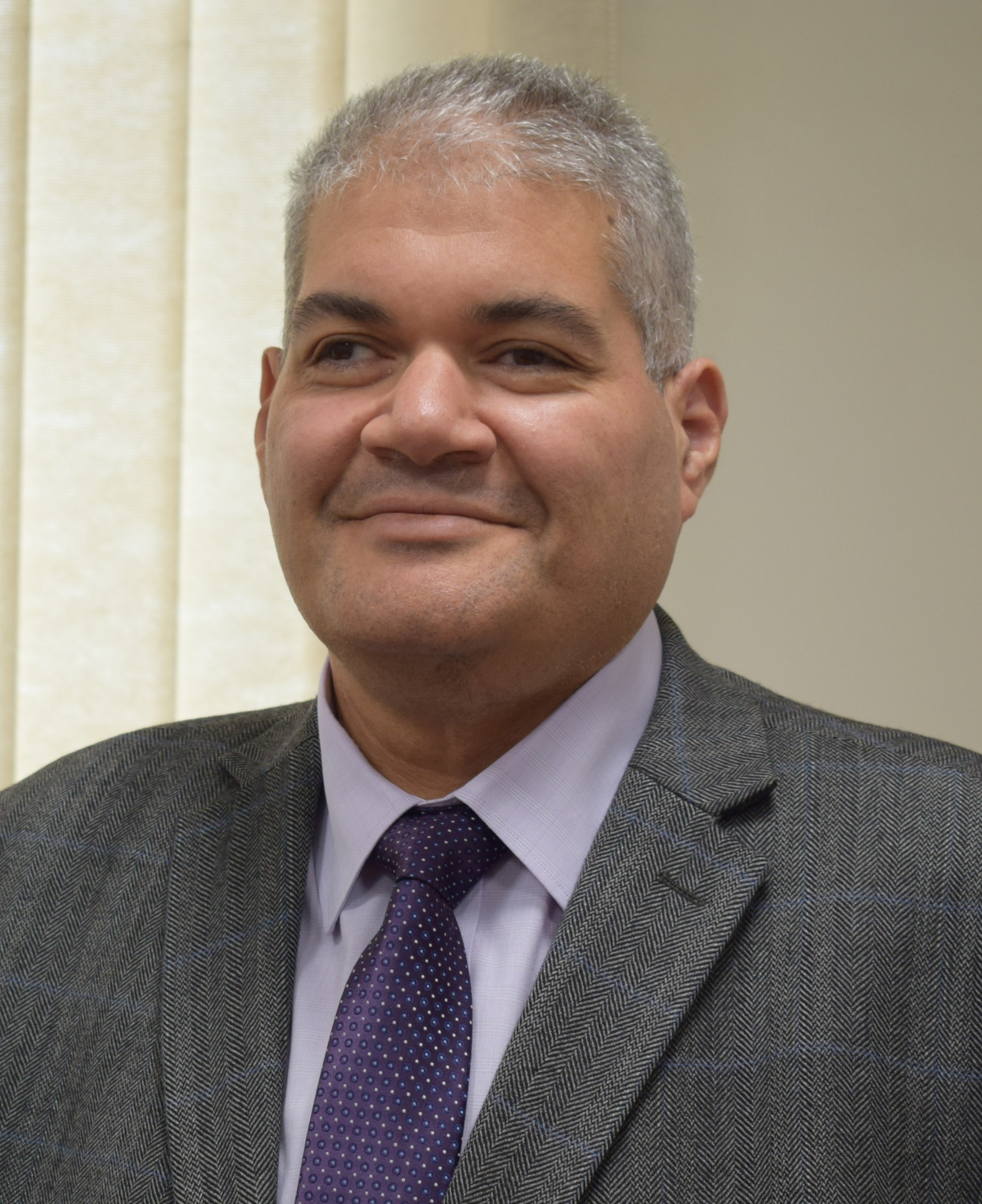
He has established an outstanding international reputation in the
area of green nanophotonics with focus on the intelligent
computational modeling of modern nano-photonic devices enabling
technologies needed to realise low-carbon green society. He has
published
269
journal publications, mostly in OSA, IEEE and IET/IEE,
authored
3
books (Computational Photonics, Wiley 2010 and Computational Liquid
Crystal Photonics, Wiley 2016, Computational of Photonic sensors,
2018) both are adopted references for Graduate Programs in
Photonics at international Universities such as MIT, Purdue
University, Indian Institute of Technology, National University of
Singapore, Mansoura University and Zewail City, and
264
conference papers in international conference in photonics, many of
these are invited talks, and keynote lectures, attracted external
funding, from both industry and Research Councils, in the region
of
$
4M,
and supervised to successful completion
35
PhD students, over
70
MSc/MRes/MPhil students and
15
postdoctoral research fellows. He led the team that developed one
of the world’s best comprehensive numerical packages for the
analysis, design and optimization of nano-photonic devices, and
subsystems, where a number of “world-first” numerical approaches
have been developed. His five key papers introducing his novel
numerical package; have been cited more than 400 times. His
publications also have been cited more than
3998
times, with an h-index of
34
and i10-index of 115. His numerical package has been widely adopted
by both academic and industrial Photonics communities to analyze,
design and optimize the performance of a wide range of
nano-photonic devices employed for applications in solar cells,
optical telecoms, sensing, optical imaging and encryption and other
applications.
He has served the International Photonics Society through active contribution to the organization and technical committees of a number of international conferences. Since 2007, he has been an Associate Editor-in-Chief of the IEEE Photonics Technology Letters, and Associate Editor-in-Chief of the Journal of Optical and Quantum Electronics, and served as Guest Editor-in-Chief of J Optical and Quantum Electronics (2010), and founding member of Editorial Board of Materials Theory Journal (Springer) and acted as Reviewer for many international Photonics Journals such as IEEE J Lightwave Technology, IEEE Photonics Journal IEEE J Quantum Electronics, IEEE J Selected Topics in Quantum Electronics, IET Optoelectronics, OSA Optics Express, OSA Optics Letters, and many others. Moreover, he acted as Technical expert and Reviewer for a number of research funding councils and learnt societies such as Engineering and Physical Sciences Research Council (EPSRC), UK, Royal Society, UK, Royal Academy of Engineering, UK, National Academy of Arts and Sciences, Holland, Science and Technology Development Fund, Egypt, National Telecom Regulatory Authority (NTRA), Egypt and others.
Recently, Dr. Obayya was elected as the first Arab and African Fellow of Optical Society of America (OSA) in Sep. 2019, and IEEE Fellow of IEEE Photonics Society, January 2021. He was elected Fellow of African Academy of Science (AAS), 2018, and Chairman of Nanotechnology Group of AAS. Also, He was elected as a board member of Egyptian Society of Optical Science and Applications (ESOSA), elected Fellow of the Institute of Engineering and Technology, IET (formerly FIEE), UK, 2010, elected Fellow of The Institute of Physics (IoP), UK, 2010, elected Fellow of The Higher Education Academy, UK, and Senior member of IEEE, USA, 2005, member of Board of Academy of Scientific Research and Technology (Egypt’s National Academy of Science), Member of Wales Institute of Mathematical and Computational Sciences (WIMCS), UK, Member of Optical Society of America (OSA), Member of International Society for Optical Engineering (SPIE), USA and Member of Applied Computational Electromganetic Society (ACES).
As remarkable recognition of his research achievements, he was the recipient of many national and international awards and recognitions such as African Union Kwame Nkrumah Continental Award for Scientific Excellence 2020 edition, January 2021, Ahmed Zewail Prize for Scientific Knowledge, for spreading the Science and Technology of Photonics for the wider Egyptian community, CCSS, Egypt, 2021, Order of Science and Arts of the first class, the most prestigious medal awarded by President of Egypt, President Abdel Fattah el-Sisi, in the National Science Day, Egypt, 2019, Best Scientific Book, COMSTECH-Awards-2017, 2019, State Appreciation Award, Egypt, 2019, UNESCO Chair, Paris, 2019, Honorary Special Chair Professor of Photonics, University of Nottingham, UK, 2017, for his outstanding world-class research record, elected Senior Associate by Board of Directors, International Center for Theoretical Physics (ICTP), Italy, 2017, for his pivotal role in photonics research and education in Egypt, The Region and Africa and elected Senior Member by Board of Directors, Optical Society of America, OSA, 2017 for his internationally recognized research in Photonics, UAE President Khalifa Award for Distinguished Arab Professor in Scientific Research in April 2017, Doctor of Science (DSc) degree in Photonics from City University of London in Jan 2016; a degree awarded only to those who gained international distinction in their own fields, Arab Thought Foundation Award in Scientific Creativity (Lebanon), Dec. 2015; only one award in all fields of Science and Engineering is granted each year for one Arab Scientist, Egyptian Academy of Scientific Research and Technology (ASRT) Award in Engineering Sciences Creativity, Sept. 2014; only one award is granted each year for an Egyptian Scientist in Engineering Sciences, Abdul Hameed Shoman Foundation (Jordan) Award for Arab Scientists in Engineering Sciences, Oct. 2014; only one award is granted each year for one Arab Scientists in Engineering Sciences, State Award of Excellence for Engineering Sciences from the Egyptian State, Sept. 2013; only one scientist is awarded this prestigious award every year, Incentive State Award for Engineering Sciences from the Egyptian State, Sept. 2005, and many others.
Eva Acosta was born in 1963 in a modest neighborhood of the historic city of Santiago de Compostela in Spain. After finishing the highschool she enrolled at the University being the second woman of a working classs family in joining the University and the only one in having a PhD degree. Actually she is full Professor at the University of Santiago de Compostela, Spain, from 2012. She got her MS and PhD degrees at the same University (1986 and 1991 respectively) and pos-doc education at Tokyo Institute of Tecnology (1992-1993 and 1997) with specialization in microoptics with the award of a fellowship and senior grant of the EU. Back in Santiago de Compostela she became associate proffesor in 1994 and she leaded the group of microoptics and wavefront sensors. She was vice-dean of the Faculty of Physics from 1996 to 2000 and coordinator of Erasmus program till 2004. Her actual areas of interest are optics, optical aberrations, wavefront sensors, wavefront coding and visual optics and she collaborates with the Univ. of
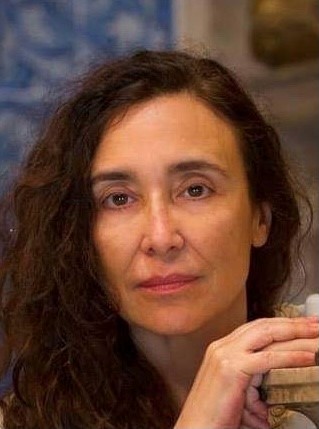
Arizona, USA and University of Tulancingo, Mexico in these subjects. She has wrote more than 100 papers in different field of Optics and got funding from the Spanish and Galician goverments from 1994 to equip the actual research laboratory of visual optics of the Faculty of Physics. She teachs Mathematics and Optics at the Facultly of Physics of the University of Santiago de Compostela.
María J. Yzuel is an Emeritus Professor at the Autonomous University of Barcelona, where she was a full professor of optics from 1983 to 2011. She worked in diffraction image theory, image quality evaluation, optical pattern recognition, and in image techniques for medical diagnosis. During the last two decades she also worked in polarization characteristics of spatial light modulators and its use in diffractive optics. Yzuel is a fellow member of OSA, IOP, SPIE, EOS, SEDOPTICA, and RSEF. She was a vice-president of the ICO (International Commission for Optics) from 1990 to 1996 and from 2011 to 2017. From 1993 to 1996 she was the President of the Spanish Optical society. Yzuel was a member of the SPIE Board of Directors from 2001 to 2003 and from 2007 to 2010. She was 2009 SPIE President.

Colin Sheppard obtained his Ph D degree in Engineering from University of Cambridge (1973). He developed an ultra-high vacuum scanning electron diffraction system, and applied it to observation of the oxidation of metal surfaces, under the supervision of Professor Sir Charles Oatley, who constructed the first scanning electron microscope. He spent two years in industry, at English Electric Valve Company, researching on negative electron affinity silicon photocathodes. He then went to Oxford, where he worked with Professor Rudi Kompfner, inventor of the traveling wave tube and former director of Bell Labs at Holmdel. He was University Lecturer in Engineering Science at the University of Oxford, and Official Fellow and Tutor in Engineering at Pembroke College. He was awarded the DSc degree in Physical Sciences from University of Oxford in 1986. In 1989, he moved to Australia, where he was Professor of Physics and Head of the Physical Optics Department at the University of
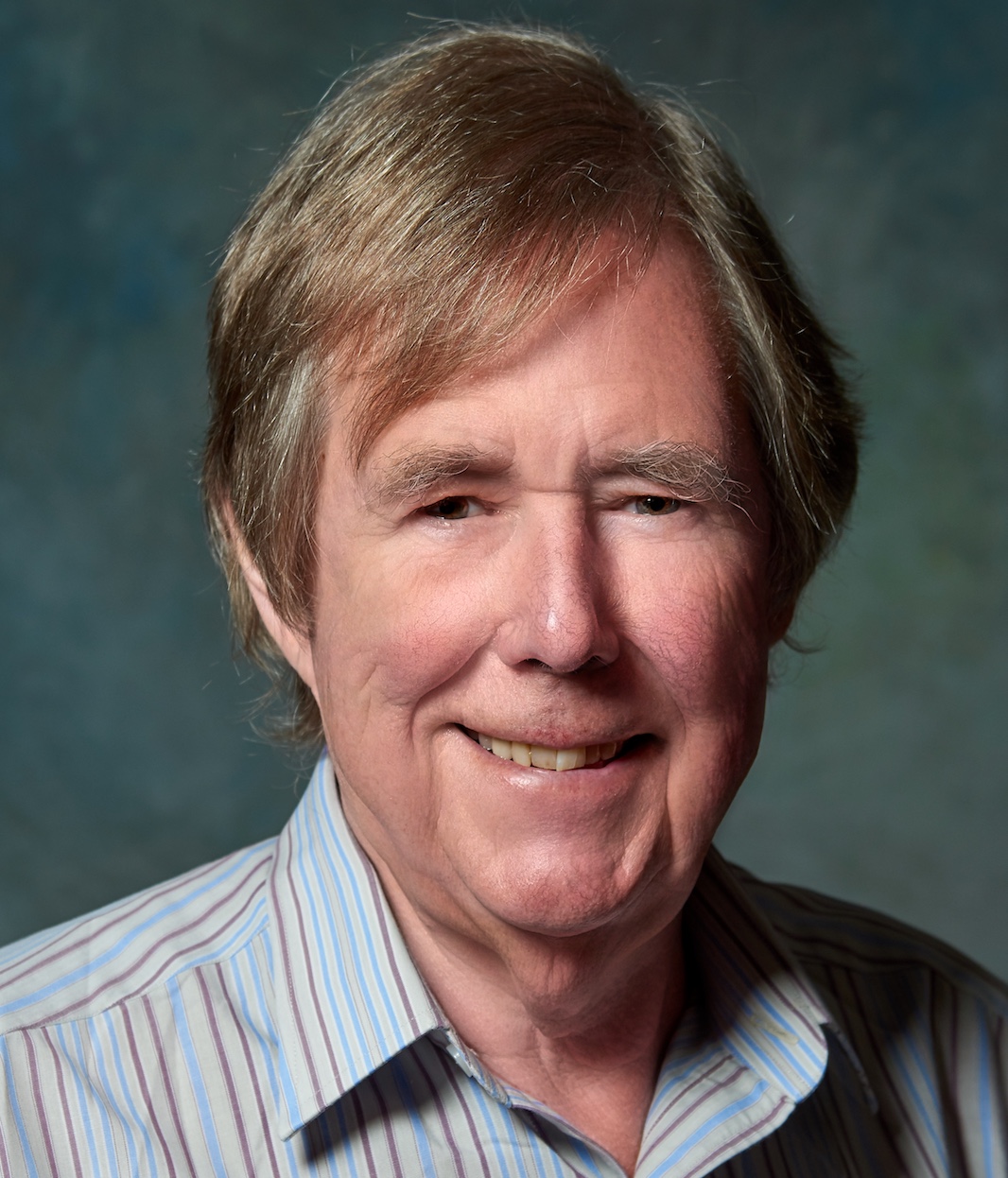
Sydney. From 2003, he was Professor and Head of the Department of
Bioengineering at the National University of Singapore, where he
also held joint appointments in Diagnostic Radiology, Biological
Sciences and the NUS Graduate School (NGS). From 2012 to 2017 he
was at the Italian Institute of Technology in Genoa as Senior
Scientist.
Professor
Sheppard is currently Honorary Professorial Fellow at the
University of Wollongong, Australia; External Collaborator and
Visiting Scientist with the Italian Institute of Technology, Genoa,
Italy; and Supernumerary Fellow of Pembroke College
Oxford.
He has
held visiting professorships at many different institutions,
including UC-Berkeley, MIT, EPFL, TU-Delft, Warsaw University of
Technology, University of Erlangen-Nürnberg, University of Jena,
Autonomous University of Barcelona , University of Buenos Aires,
University of the Philippines, University of Western Australia, and
University of Queensland, as well as fellowships at Stanford
University, Tokyo University, UNSW, University of Besançon, and
Institut Fresnel Marseille.
He was
elected Fellow of OSA, SPIE, IEE, Institute of Physics, Japan
Society for Applied Physics, and the Royal Microscopical Society.
He served as Vice-President of the International Commission for
Optics (ICO), and as President of the International Society for
Optics Within Life Sciences (OWLS). He was awarded the Italian
Society for Optics and Photonics Galileo Galilei Medal, Institute
of Physics Optics and Photonics Division Prize, Max Planck
Bonhöffer Medal, Humboldt Research Award, ISATA Mercedes Award,
National Physical Laboratory Metrology Award, Prince of Wales Award
for Industrial Innovation, British Technology Group Academic
Enterprise Award, and the IEE Gyr and Landis Prize.
He
developed an early laser microscope (1975), patented scanning
microscopy using Bessel beams (1977), published the first
demonstration of scanning two-photon microscopy (by SHG) (1977),
published the first paper on Bessel-Gauss beams (1978), proposed
two-photon fluorescence and CARS microscopy (1978), launched the
first commercial confocal microscope (1982), developed the first
confocal microscope with computer control and storage (1983),
proposed scanning microscopy using a detector array with pixel
reassignment, now known as image scanning microscopy (1988). He has
made substantial contributions in the fields of diffraction theory,
beam propagation, pulse propagation, scattering and inverse
scattering, 3D image formation, and polarization
algebra.
Giulietta Smulevich is professor of Physical Chemistry, at the Department of Chemistry “Ugo Schiff”, University of Florence, (Italy) since 2001. She was Visiting Professor at the Technical University, Berlin (Germany), University of Buenos Aires (Argentina), Concordia University, Montreal (Canada), Rutgers University, Trenton (USA); External Professor Department of Life Sciences, Aalborg University (Denmark); Visiting Researcher and Faculty member, Chemistry Department, Princeton University (USA), Visiting Researcher Chemistry Department Tel Aviv University (Israel). Member of the Editorial board of Biopolymers and Associate Editor of Journal of Raman Spectroscopy. Prof. Smulevich’s expertise is within the biophysical chemistry field, and in particular she studies the structure and function of heme proteins using mainly resonance Raman spectroscopy along with a wide variety of other supporting experimental disciplines. In 1988 her pioneering resonance Raman study of recombinant cytochrome c peroxidase was the first comprehensive studies of active site structural changes attending a given amino acid replacement, demonst-
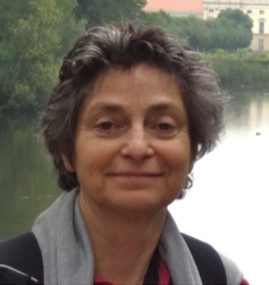
rating the power of the combination of Raman spectroscopy and site directed mutagenesis for elucidating subtle structural features and the intricate mechanistic details important for protein stability and function. In 1990 she extended for the first time the application of resonance Raman spectroscopy to an optical microscope to study heme protein single crystals to highlight the artifacts induced by the crystallization process or the conformational alteration induced by cooling. Prof. Smulevich has published more than 200 papers in peer-reviewed international Journals, chapters in Books, and she has delivered more than 100 invited lectures at International Conferences and Universities.
Prof.
Anindya Datta obtained his Ph. D. in 1994 from Jadavpur
University,Kolkata, under the guidance of Prof. Kankan
Bhattacharyya in Indian Association for the Cultivation of
Science. He was a Postdoctoral Fellow in Iowa State
University and Visiting Scientist in Raja Ramanna Center of
Advanced Technology, Indore, before joining Department of
Chemistry, IIT Bombay, as an Assistant Professor in 2002.
Presently, he is Professor and Head of the Department, Chemistry,
IIT Bombay. His research interest in ultrafast dynamics in chemical
systems, fluorescence correlation spectroscopy and
fluorescence lifetime imaging microscopy. He has received Bronze
Medal from Chemical Research Society of India and is a Fellow of
National Academy of Science, India.

José Luís Santos
José Luís Santos, Graduated in Physics by University of Porto (1983). PhD (1993) and Habilitation (2008) from the same University. Hismain research interests are related with optical fibre sensing and optical fibre technology. He holds the position of Professor in the Physics and Astronomy Department of Faculty of Sciences of University of Porto; researcher of INESC TEC– Center of Applied Photonics.

Partha Roy Chaudhuri
Department of Physics, IIT Kharagpur, Kharagpur- 721 302, India
Email: roycp@phy.iitkgp.ernent.in
Partha Roy Chaudhuri is a Professor of Physics at Indian
Institute of Technology Kharagpur, working in the area of Fiber
and Integrated Optics, and Photonics. In 2000, he did his PhD
from the Fiber Optics Group of Indian Institute of Technology
Delhi. He then pursued postdoctoral research in the Kyoto Institute
of Technology, Japan, as a Japanese Government Fellow where he was
working on various optical waveguides and components. Later, during
2002-2004, he worked in the Institute for
Communications
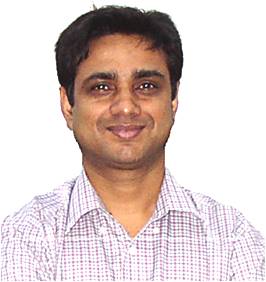
Research, NUS, in experimental research with photonic crystal fibers and components. In 2004, he joined the Faculty of the Physics Department, IIT Kharagpur. He is an author/coauthor of 90 research papers and contributed chapters in six books/edited volumes. His current research interests are in the area of microstructured optical fibers/photonic crystal waveguides and devices for passive and active/nonlinear applications.
Dr. P K Gupta is presently a Visiting Professor at IIT Delhi. He retired as acting Director of Raja Ramanna Centre for Advanced Technology, Indore, a unit of the Department of Atomic Energy, where he served as Head of its Laser Biomedical Applications and Instrumentation Division and the Laser Materials Development and Devices Division. Dr. Gupta was also a Senior Professor with HomiBhabha National Institute, a deemed university and a Visiting Professor at IISER Bhopal from December 2016 till June 2017. Dr Gupta’s research interests include lasers and their biomedical applications.
Dr.
Gupta has over 390 publications in peer reviewed journals and
edited volumes, one book, over 400 conference presentations that
include over 100 invited talks and has 7 patents (4 granted and 3
filed). Dr. Gupta is a Fellow of the Indian Academy of Sciences,
Bangalore, National Academy of Sciences, Allahabad and Optical
Society of America. He has received the N S
Satyamurthy

memorial award of Indian Physics Association for the year 1988 for his contributions on mid-infrared coherent sources, the 1998 HomiBhabha Science and Technology Award of the Department of Atomic Energy for his contributions in the area of biomedical applications of lasers, the annual award of the Society for Cancer Research and Communication for the year 2006, group achievement awards of DAE for the years 2012 and 2013 and HomiBhabha National Institute Distinguished Faculty Award for the year 2015.
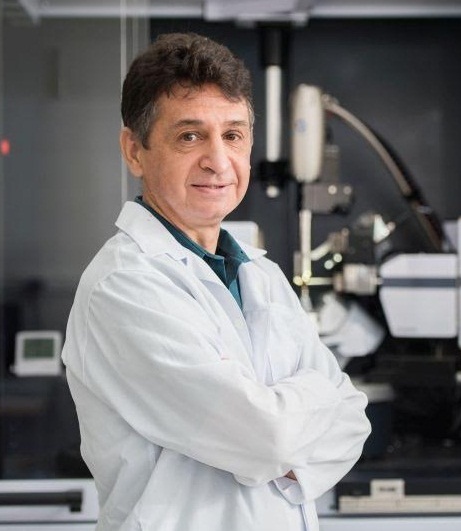
Jae-Hyeon Ko received the B. S. degree in Department of Physics from Seoul National University, Korea, in 1992, M. S. and Ph. D. degree in Department of Physics from Korea Advanced Science and Technology, Korea, in 1996 and 2000, respectively.
From 2000 to 2003, he was a Research Associate with the Institute of Materials Science, University of Tsukuba in Japan. From 2003 to 2004, he was a Senior Researcher with Samsung Corning Co., Ltd. Since 2004, he has been a Professor with the Department of Physics, Hallym University in Korea. He is the author of more than 200 articles and one chapter of two books. His research interests include optical simulation of display and lighting devices, spectroscopic studies on condensed matters including ferroelectrics, dielectrics, and amorphous materials. He is an Editor-in-Chief of Korean Journal of Optics and Photonics, an Associate Editor of Journal of Information Display, an Editor of New Physics: Sae Mulli.
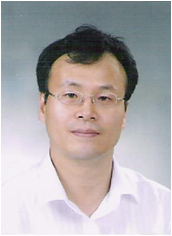
Prof. Yoshihisa Aizu received Dr. Eng. in electronics from Hokkaido University in 1985. From 1985 to 1989, he was in Kowa Company Limited, Tokyo. In 1989, he joined Hokkaido University as a research associate. From 1990, he was an associate professor at Muroran Institute of Technology, and in 2006 he has been promoted a professor, the position he now holds. From 1992 to 1993, he was a visiting researcher in University Erlangen, Germany. His current research activities are in the fields of biomedical applications of spectroscopy, optical imaging, colorimetry, laser speckle imaging, and laser light scattering. He is a member of SPIE and OSA.
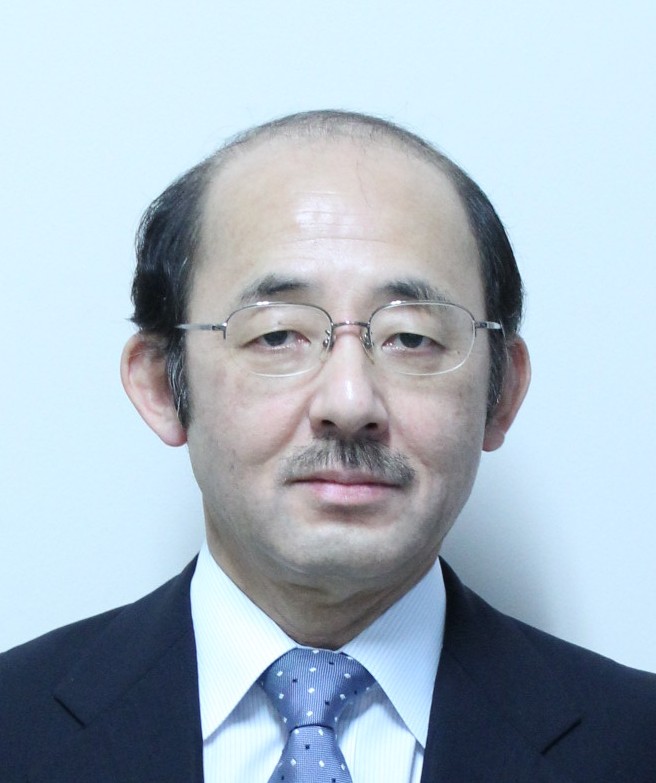
Jun Uozuml received his B Eng, M Eng and DEng in electronic engineering from Hokkaido University, Sapporo, Japan in 1976, 1978, and 1981, respectively. Since 1981, he has been a member of the research staff in the National Food Research Institute, Ministry of Agriculture, Forestry and Fisheries, Japan. In 1986, he joined the Research Institute of Applied Electricity (currently the Research Institute for Electronic Science) at Hokkaido University as a research associate, and became an associate professor at the institute in 1989. Since 1999, he has been a professor at the Faculty of Engineering, Hokkai-Gakuen University, Sapporo, Japan. His current research interests are in the fundamentals and applications of speckles, light scattering in random and fractal media, optical data processing, digital image processing, and the processing of spectroscopic data. He belongs to OSA, SPIE, Society for Applied Spectroscopy, Japan Society of Applied Physics, Optical Society of Japan, and five other societies.
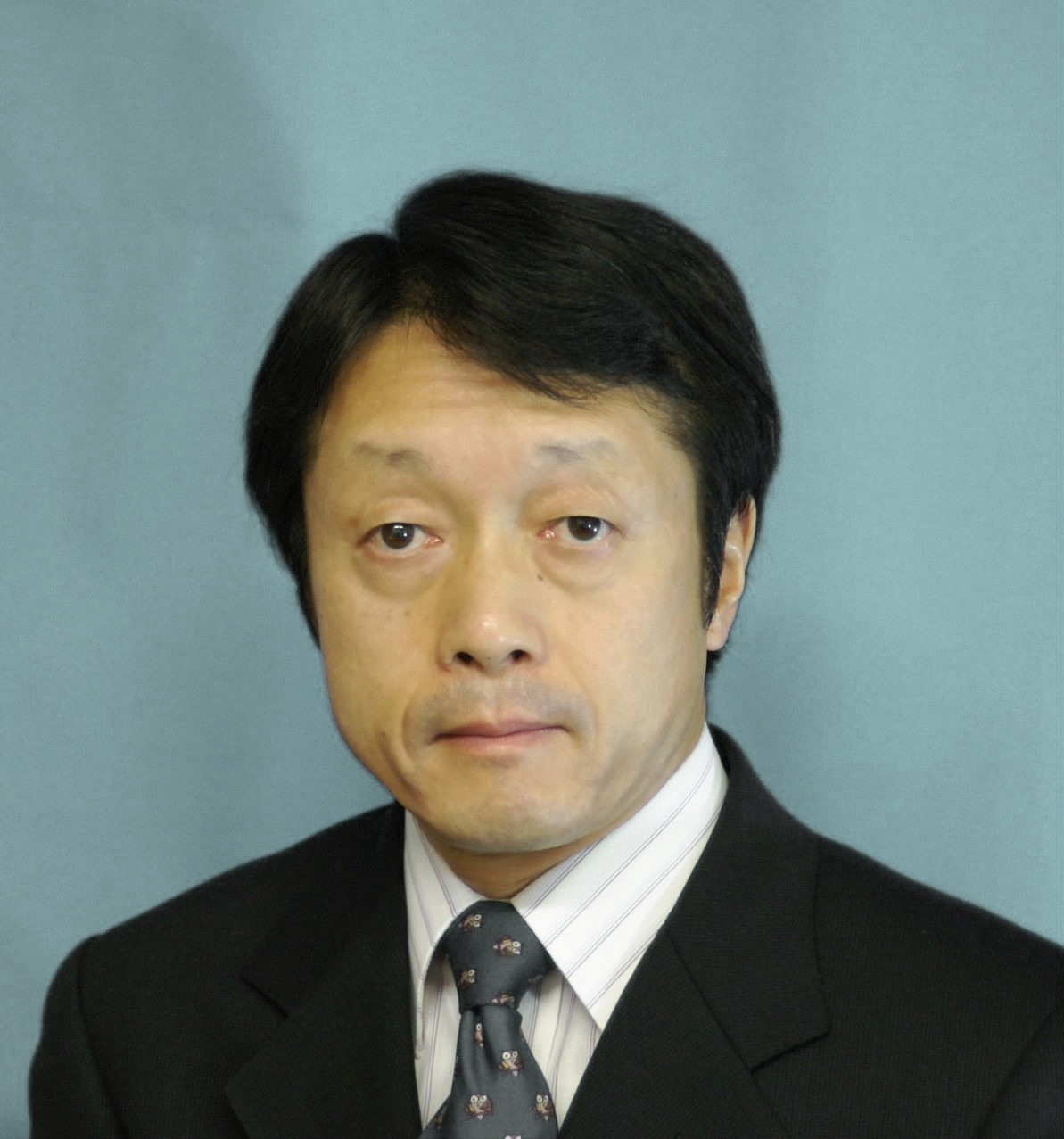
Lianxiang Yang
Phd, Professor
Director of Optical Lab., Dept. of Mechanical Engineering, Oakland University
Fellow of the International Society of Optics and Photonics (SPIE)
Fellow of the International Society of Automotive Engineers (SAE)
Tel: (248) 370 – 2283
E-mail: yang2@oakland.edu
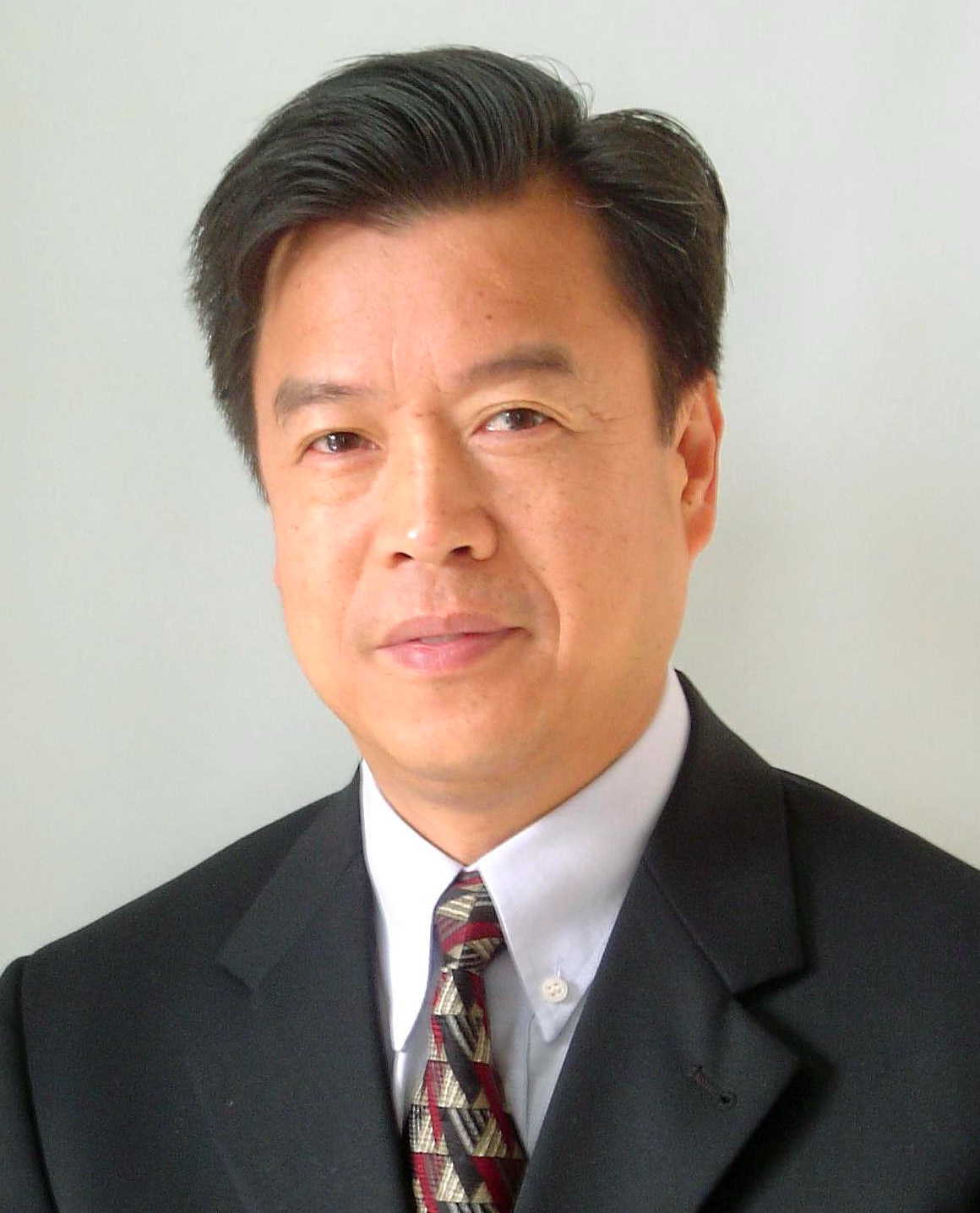
Professor
Lianxiang Yang a full professor and the director of the optical
laboratory and the advanced optical research team in Mechanical
Engineering of Oakland University, USA. Prior to joining Oakland
University in 2001, he was a R&D scientist at JDS-Uniphase,
Canada from 2000 to 2001, a senior engineer at Dantec-Ettemeyer AG
(Currently called Dantec Dynamics), Germany from 1998 to 2000, a
research and senior research fellow at the University of Kassel,
Germany from 1991 to 1998, and a lecture at Hefei University of
Technology, China from 1986 to 1991.
Prof.
Yang has been a Fellow of SPIE (SPIE-The International Society of
Optics and Photonics) since 2008, a Fellow of SAE (SAE-The
International Society of Automotive Engineers) since 2016. He is
currently the Chair of the Materials Engineering Activity Committee
of SAE. He was a vice Chair and the Chair of the Material Modeling
and Testing Committee of SAE from 2008 to 2012. He is currently
serving as Associate Editor or on editorial board for 6 peer
reviewed journals, such as “Optics and Lasers in Engineering”;
“Optical Engineering"; “Materials Evaluation”; “Chinese Journal of
Mechanical Engineering-English Version” and so on.
Professor
Yang’s research is in the cutting edge area of advanced optical
metrology, which focuses on the development and application of
advanced optical methods such as digital image correlation, digital
laser speckle interferometry/digital holography, digital
shearography etc. to analyze and solve a wide ranging number of
engineering problems in automotive, aerospace, and high tech
industry. He has published 3 books, 2 book chapters (another book
and two book chapters are under preparation), 8 journal/proceeding
editorials, over 200 peer-reviewed journal and conference papers,
and applied for many patents. In the past 10 years, Dr. Yang
has delivered dozens of invited presentations, research seminars,
and keynote presentations in US and abroad.
Since joining Oakland University in 2001, Professor Yang has received over 4 million US dollar’s research funding from national agencies and industry. He has advised and is advising over 70 graduate students, including 3 post-doctoral fellows, 17 PhD students, over 20 visiting scholars and over 30 Master Theses.
Lequn (Jennifer) Liu received a Ph.D. degree in Materials Science and Engineering from University of Illinois at Urbana-Campaign in 2002. She has a MS degree in Device Physics from Institute of Microelectronics of Chinese Academy of Science and a BS degree in Applied Physics from Tsinghua University, Beijing, China. She was a Staff Process Integration Engineer at Cypress Semiconductor, a Senior Process Development Engineer at Micron Technology, and currently is a Principal Patent Engineer at OmniVision Technologies, Inc. She has over 25 publications and over 15 patents or patent applications. Her fields of interest include semiconductor processing and devices, photonics and optics, and artificial intelligence.
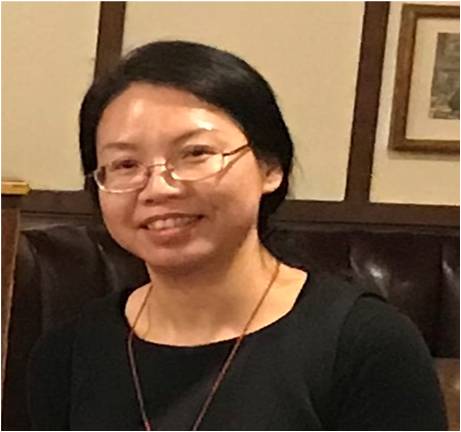
Dr. Frank Deppisch
Reader in Physics,
Department of Physics & Astronomy,
University College London,
Gower Street, London WC1E 6BT, UK
Mob: +44 798 844 7306; Tel: +44 207 679 3454; Fax: +44 207 679 7145
Email: f.deppisch@ucl.ac.uk; Skype: spinorcoc
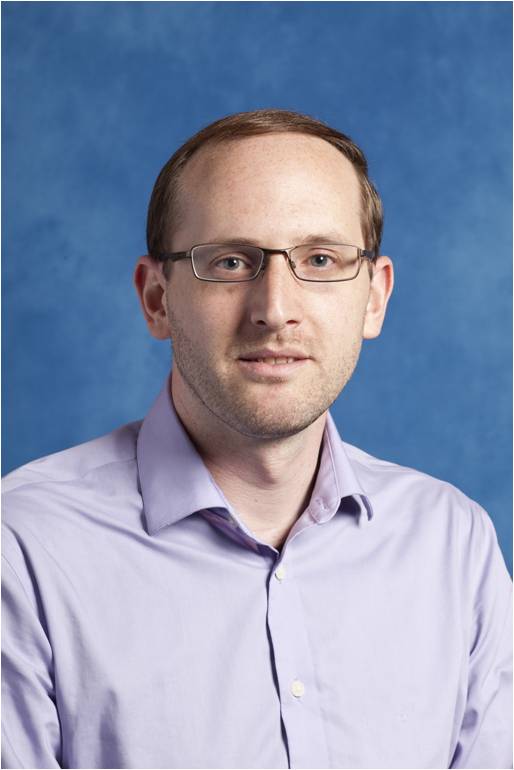
Frank Deppisch
Frank
Deppisch did his undergraduate studies at the University of
Wuerzburg, Germany, and gained a physics diploma in 2000 with a
thesis on the subject "Calculation of lepton flavor violating SUSY
processes at e+e- colliders" with Prof Reinhold Rueckl. With the
group of Prof Rueckl, he also worked as a Ph D student and Research
Assistant on the topic of supersymmetric neutrino models. As part
of this research he was awarded a postgraduate grant of the
University of Wuerzburg. During the time he also visited the
Insituto de Fisica Corpuscular for nine month to work with Prof
Jose Valle on neutrino mass models, for which he was awarded a
Marie Curie Fellowship of the European Community. In 2004 he
completed his Ph D thesis entitled "Towards a Reconstruction of the
SUSY Seesaw Model".
Dr
Frank then joined the theory group of the German Research Center
DESY (Deutsches Elektronen-Synchrotron) in Hamburg as a
Postdoctoral Researcher, where he mostly collaborated with Prof
Peter Zerwas on “The phenomenology of supersymmetric grand unified
theories”. For his second Post-doc position, Dr Frank moved on to
join the High Energy Physics group of the University of Manchester,
UK, mainly collaborating with Prof Apostolos Pilaftsis on “Aspects
of Neutrino models explaining the Dark Matter content and the
Matter-Antimatter asymmetry of the Universe”. In February 2011, he
was appointed as Lecturer (Assistant Professor) within the High
Energy Physics group of the University College London, and in
September 2015, he was promoted to Reader (Associate Professor).
Here, Dr Frank is responsible to lead the research efforts of the
Beyond-the-Standard-Model phenomenology group as well as teaching
and supervising graduate and undergraduate
students.
Dr
Frank’s main scientific interest is in the phenomenology of physics
beyond the Standard Model. He is keenly interested in neutrinos.
Despite the developments in neutrino physics there are still many
unknowns such as the nature of neutrino mass, the presence of CP
violation in the neutrino sector and the exact form of neutrino
mixing. All these aspects have important consequences on finding
the correct flavour structure, and future developments in this area
are likely to impact on the interpretation and viability of
theoretical models such as GUT theories where for example the
lepton and quark flavour structure are tied
together.
Pankaj Kr. Choudhury
M.Sc.; Ph.D.
Professor
Institute of Microengineering & Nanoelectronics Universiti Kebangsaan Malaysia
(The National Universiti of Malaysia) UKM Bangi, 43600 Selangor, MALAYSIA
Pankaj Kumar Choudhury’s academic life was spent in
different institutions in Varanasi (India). He started research
career in 1989 from the Department of Applied Physics, Institute of
Technology (IT), Banaras Hindu University (BHU, Varanasi),
and received a Phd.
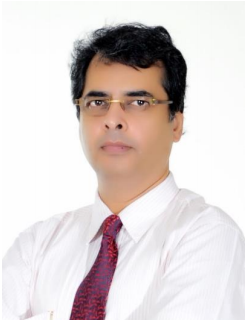
degree in Physics in 1992. From 1992 to 1997, he worked as a Research Associate at the Department of Electronics Engineering (IT, BHU). Also, during 1995–1996 he was a Guest Lecturer in Physics at the Faculty of Science and Technology, Mahatma Gandhi Kashi Vidyapith (Varanasi). In 1997 he joined the Department of Physics, Goa University (Goa, India) as a Lecturer, where he was for a couple of years until 1999. During the late 1999 he became a Researcher at the Center of Optics, Photonics and Lasers (COPL), Laval University (Quebec, Canada), where he worked on the fabrication and characterization of ferroelectric optical waveguides. During 2000–2003 he was a Researcher at the Faculty of Engineering, Gunma University (Kiryu, Japan), where he worked on the electromagnetic behavior of optical waveguides and sensing. In May 2003 he joined the position of Professor at the Faculty of Engineering, Multimedia University (Cyberjaya, Malaysia) where he was until the late 2009. During the span, he also served the Telekom Research and Development (TMR&D, Malaysia) as a consultant for projects on optical devices. During the late 2009 he became Professor at the Institute of Microengineering and Nanoelectronics (IMEN), Universiti Kebangsaan Malaysia (The National University of Malaysia, Malaysia).
His current research interests lie in the theory of optical waveguides, which include complex mediums, fiber and integrated optics, fiber optic devices, optical sensors and metamaterial properties. He has published over two hundred research papers; contributed chapters to eleven research level books; edited and co-edited three research level books in these areas.
He is the reviewer for more than a couple of dozen research journals. Also, he serves the Editorial Boards of Waves in Engineering, Science and Technology (American Scientific Publishers, USA), International Journal of Humanitarian Technology (Inderscience Publishers, Switzerland), and the Asian Journal of Physics (Anita publications, India). He is the Section Editor of Optik – The International Journal for Light and Electron Optics (Elsevier, The Netherlands) and the Editor-in-Chief of the Journal of Electromagnetic Waves and Applications (Taylor & Francis, UK).
He is Senior Member of the Institute of Electrical & Electronics Engineers (IEEE), the Optical Society of America (OSA), and the Society of Photo-Optical and Instrumentation Engineers (SPIE). Also, he is a Traveling Lecturer of the Optical Society of America.
Liangcai Cao
Ph.D.
Director, Institute of Opto‐electronic Engineering
Associate Professor, Dept. of Precision Instruments
Tsinghua University
Beijing, 100084, P. R. China
Office:+86‐10‐6278‐1204; Mobile: +86‐13691572257;Fax: +86‐10‐6278‐1280
Email: clc@tsinghua.edu.cn
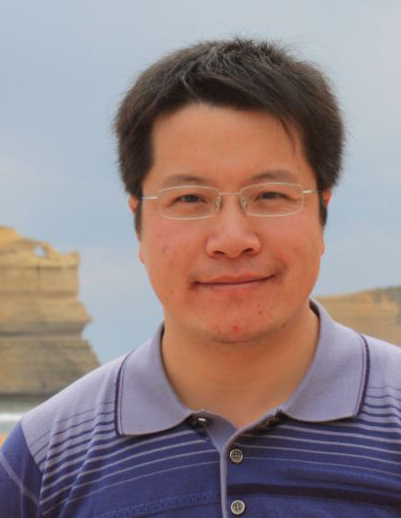
Prof
Reuven Chen
Faculty
of Exact Sciences
School
of Physics and Astronomy
Tel-Aviv
University, Israel
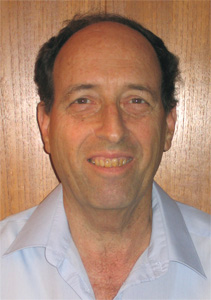
Dr. Ignacio Moreno is Professor of Optics at University Miguel Hernández, Elche (Spain). He received the degree in Physics and the Ph D in Physics in 1992 and 1996, respectively, at the Autonomous University of Barcelona. For two years (1996-98) he joined the Department of Optics of the University of Valencia, and since 1998 he is at the Department of Materials Science, Optics & Electronics Technology at University Miguel Hernández – UMH.
He is an expert in the field of liquid cristal based optical modulators, and their applications in diffractive and polarization optics. He has published approximately 120 articles in peer reviewed journals.
He received the grades of Senior Member from SPIE – The International Society for Optics and Photonics (2009), Senior Member from OSA – Optical Society of America (2010), and Fellow Member from SPIE (2014). In 2012 he received the EOS2012 Prize from the EOS – EuropeanOptical Society.
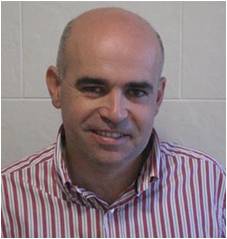
In the period
2005-2014 he was editor of the Journal Óptica Pura y Aplicada – OPA.
In 2014 he became Vice-President of SEDOPTICA. In 2009-
2011 he was member of the SPIE Publications Committee. And since
2013 he is associate editor of the Journal Optical
Engineering.
Ting-Chung Poon is a Professor of Electrical and Computer Engineering at Virginia Tech, Blacksburg, Virginia. His current research interests include 3-D image processing, and optical scanning holography. Dr. Poon is the author of the monograph Optical Scanning Holography with MATLAB (Springer, 2007), and is the co-author of the textbooks Introduction to Modern Digital Holography with MATLAB (Cambridge University Press, 2014), Engineering Optics with MATLAB (World Scientific 2006), Contemporary Optical Image Processing with MATLAB (Elsevier 2001), and Principles of Applied Optics (McGraw-Hill, 1991). He is also Editor of the book Digital Holography and Three-Dimensional Display (Springer 2006) and has served as Guest Editor of, among other journals, International Journal of Optoelectronics, and Optical Engineering. Dr. Poon served as Topical Editor/
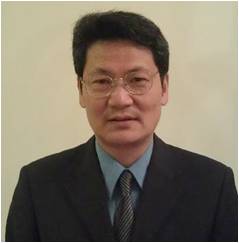
Division Editor of Applied Optics from 2004 to 2014. Currently he is Associate Editor-in-Chief of Chinese Optics Letters, and Associate Editor of IEEE Transactions on Industrial Informatics. He is the founding Chair of the Optical Society (OSA) topical meeting Digital holography and 3-D imaging (2007). Dr. Poon has been a member of the Board of Editors of the OSA and is currently on the Editorial Board of Optics and Laser Technology, the Journal of Holography and Speckle, and the journal 3D Research. Dr. Poon is a Fellow of the Institute of Electrical and Electronics Engineers (IEEE), the Optical Society of America (OSA), the International Society for Optics and Photonics (SPIE) and the Institute of Physics (IOP).
Dr. Osamu
Matoba
Professor
Department
of Systems Science
Graduate
School of System Informatics
Kobe
University
Rokkodai
1-1, Nada, Kobe 657-8501,
Japan

Osamu Matoba received the Ph.D. degree in Applied Physics from Osaka University, Osaka, Japan, in 1996. He was a Research Associate at Institute of Industrial Science, University of Tokyo, from 1996 to 2002. From 2002 to 2009, he was an Associate Professor in the Department of Computer and Systems Engineering in Kobe University. From 2009, Dr. Matoba has been a full Professor in the Department of Systems Science, Graduate School of System Informatics, Kobe University. Dr. Matoba is a Fellow of SPIE, a member of OSA, IEEE, the Optical Society of Japan, and the Japan Society of Applied Physics. He received the 2008 IEEE Donald G. Fink prized paper award. His interests are in optical sensing including digital holography and OCT, holographic 3D display, holographic memory, and artificial control of scattering phenomena.
Professor K P Rajappan Nair, a scientist of
reputation is known for his scientific contribution in the field of
microwave spectroscopy, molecular structure and interactions. He
was born in a small village Mamunda near Changanacherry, Kerala to
a farmer family. After his early education in Kerala he
received M.Sc and Ph.D. degrees from Banaras Hindu
University. He carried out decades of research work in many
Universities in Germany in the field of laser and microwave
spectroscopy. After his Ph.D. from Banaras Hindu University, he
received an Alexander von Humboldt Fellowship to carry out research
at the Freiburg University. The award letter was signed by none
other than Nobel Laureate Werner Heisenberg. Later he joined
the University of Texas at Austin as a postdoctoral fellow and
thereafter the Universities of Berlin (FU), Ulm, Lille and
Hannover.
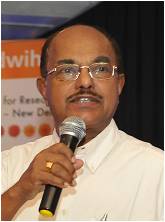
He was Professor and Dean of the Faculty of Science at Cochin University of Science and Technology. At Cochin he established a Laser and Spectroscopy Lab obtaining funds from DST and AICTE. He received D.Sc. degree from Dibrugarh University for his thesis on microwave spectroscopy and hyperfine interactions in molecules.
He has published more than 200 research papers and two widely read books “Atoms, Molecules and Lasers” and “Atomic Spectroscopy”. He was the sectional president of the Indian Science Congress Association and has ardently taken many initiatives in Indo-German collaborations. He was the organizer of a World Malayalam Conference in Berlin supported by Berlin government and an Indo-German conference on Lasers and Nanoscience in Trivandrum and has written books and articles on Indo German contributions in science and culture.
He is a fellow of the Laser and spectroscopy Society of India and recipient of Indian Spectrophysics Award and GMF award. Asian Journal of Physics and Asian Journal of Spectroscopy have published special issues of the journals in honour of his contributions in science.
At present he is a visiting scientist at Leibniz University Hannover and an Adjunct Professor to the Manipal University.
Clifford J. Cunningham is a Canadian-born astronomer and author of numerous books on asteroids. He obtained his Bachelor of Science degree from the University of Waterloo in 1976; upon enrollment, at age 15, he was the youngest student ever to attend UW.[1] In 1991 he earned his BA in Classical Studies. For his book Introduction to Asteroids (1988) and development of The Minor Planet Index to Scientific Papers (currently on the small bodies node of the Planetary Data System managed by NASA), an asteroid was named in his honour. Asteroid 4276 was named Clifford. [2]He is a contributing editor to Mercury magazine (since 2001), and a contributor to The Astronomical Calendar (1988-2013). In 2009 he enrolled in the PhD program (history of astronomy) at James Cook University in Australia. In 2013 he became affiliated with NARIT, the National Astronomical Research Institute of Thailand. In October, 2013 he was appointed to the editorial board of the Asian Journal of Physics, and in 2014 a contributor to Encyclopædia Britannica.[3] He earned his PhD in the history of astronomy at the University of Southern Queensland in Australia in 2015.
After years of research, Dr. Cunningham finally discovered who actually coined the word 'asteroid'. Although 'asteroid' has been attributed to the famous astronomer William Herschel, Cunningham found evidence that it was actually proposed by Greek expert Charles Burney, Jr., the son of a friend of Herschel.[4] In 2014 he discovered a previously unrecognised allusion to the aurora borealis in Milton's Paradise Lost.
Dr. Peter Wai Ming, Tsang
Dr. Tsang (Ph.D. 1987) is currently an Associate Professor in the Department of Electronic Engineering, City University of Hong Kong.
Dr. Tsang had been actively engaged in the research on Digital Holography and 3D technology, focusing in the areas on fast generation of hologram, hologram processing, and hologram display methods. His research findings have been reported in International Journals, Conferences, Invited talks, and patent applications. From 2009 onwards, Dr. Tsang has published over 70 papers, 7 book chapters, and filed over 35 patents as the leading or the sole inventor.

Apart from his own research interest, Dr. Tsang has taken up in various academic and professional activities. He is currently a Topical Editor of the Applied Optics (OSA), an Editor of the ICT Express (Elsevier), and a Guest Editor/Associate Editor of the IEEE Transaction on Industrial Informatics (IEEE). On top of the Editorial service, Dr. Tsang reviews paper for international journals, conferences, and book proposals on a regular basis.
Jürgen Popp studied chemistry at the universities of Erlangen and Wuerzburg. After his PhD in Chemistry, he joined Yale University for postdoctoral work. He subsequently returned to Wuerzburg University where he finished his habilitation in 2002. Since 2002, he holds a chair for Physical Chemistry at the Friedrich-Schiller University Jena. Furthermore, he is the Scientific Director of the Leibniz Institute of Photonic Technology, Jena, since 2006. His research interests are mainly concerned with biophotonics. In particular, the development and application of innovative Raman techniques for biomedical diagnostics as well as environmental and food analysis is at the heart of his interests. He has published more than 450 journal papers and is fellow of SAS and SPIE. 2012 he received a honorary doctor’s degree at Babes-Bolyai University Cluj-Napoca, Romania and in 2013 the Robert-Kellner Lecture Award.
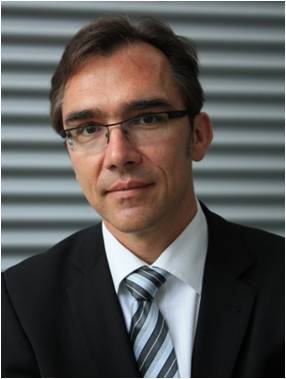
Leonid P. Yaroslavsky,
Dr. Sc. Habil. Physics&Mathematics, OSA Fellow
Professor Emeritus,
Dept. of Physical Electronics,
School of Electrical Engineering,Tel Aviv University, Israel
Leonid P. Yaroslavsky, Fellow of Optical Society of
America, MS (1961, Faculty of Radio Engineering,
Kharkov Polytechnical Institute, Ukraine), Ph.D. (1968, Institute
for Information Transmission, Moscow, Russia), Dr. Sc. Habilitatus
in Physics &
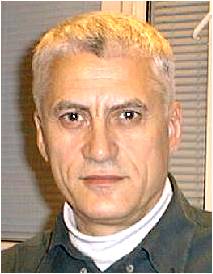
Mathetatics (1982, State Optical Institute, S.-Petersburg, Russia). Till 1995, he had headed a Laboratory of Digital Optics at the Institute for Information Transmission Problems, Russian Academy of Sciences. From 1995 till 2008, he was a full Professor at Tel Aviv University, where presently he is a Professor Emeritus. During his teaching carrier he supervised more than 50 MS and 20 PhD students. He was also a visiting research professor at University of Nürnberg-Erlangen (Germany), National Institute of Health (Bethesda, MD, USA), Institute of Optics, Orsay (France), Institut Henri Poincare, Paris (France), International Center for Signal Processing, Tampere University of Technology, Tampere (Finland), Agilent Laboratories, Palo Alto, Ca, (USA), Gunma University, Kiryu (Japan), Autonomous University of Barcelona, (Spain). Dr. Yaroslavsky's main fields of interests andexpertise include digital imaging and image processing, digital holography and 3D visual communication. He is an author of several internationally published books and more than 150 journal papers.
Svetlana N. Khonina is currently Professor at the Samara State Aerospace University ( SSAU). Samara 443001, Russia. She obtained her Ph D Degree from the same university in 1995. She is Author / Co-author of more than 400 scientific articles and 5 books. Her Scientific interests includes diffractive optics, singular optics, sharp focusing, polarization convertors, modes and eigenfunctions in optics, quantum optics, optical micro-manipulating, optical and digital image processing.
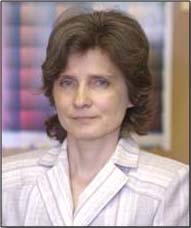
Prof. Mohammad S. Alam
Fellow - IEEE, IET, OSA, SPIE, IoP, IS&T
Department
of Electrical and Computer Engineering
University
of South Alabama,
150
Jaguar Dr., SHEC 4122
Mobile, AL 36688-0002
v: 251-460-6117;
f: 251-460-6028
e: malam@southalabama.edu
http://southalabama.edu/engineering/ece/faculty/malam/

Prof. Mohammad S. Alam received his BS and MS degrees in electrical and electronic engineering from the Bangladesh University of Engineering and Technology (BUET) in 1983 and 1985, his MS degree in computer engineering from the Wayne State University in 1989, and his Ph.D. degree in electrical engineering from the University of Dayton in 1992. Currently, he serves as a Professor of Electrical Engineering and Computer Science and as the Dean of College of Engineering at Texas A&M University – Kingsville (TAMUK). He served as the Chair of the Department of Electrical and Computer Engineering at the University of South Alabama during 2001-2015, and as the first Warren H. Nicholson Endowed Professor of Electrical and Computer Engineering. He also served on the faculty of BUET, Purdue University - Fort Wayne, and the University of Alabama. He also served as a Graduate Faculty of Purdue University and Indiana University.
His research interests include image processing, pattern
recognition, ultrafast computing, and renewable energy. He authored
or co-authoredover 500 publications, including 194 articles in
refereed journals, 325+ conference publications, and 15 book
chapters. He has edited a reference book of selected papers on JTC
(SPIE Press)andmany conference proceedings. Over 5700 citations of
his work have been reported in the Google Scholar.He received
numerous excellence in research/teaching/service awards including
the 1997 Faculty Colloquium on Excellence in Teaching Award
(Statewide recognition) from the Indiana University, 2003 Scholar
of the Year Award from Phi Kappa Phi Honor Society, 2005
Outstanding Scholar of the Year Award from the USA Alumni
Association, 1998 Outstanding Engineer Award from Region 4of IEEE,
2013 Outstanding Engineer Award from Region 3 of IEEE, and 2016
Joseph M. Biedenbach Outstanding Engineering Educator Award from
Region 3 of IEEE. He was also recognized as one of the 50 faculty
who made outstanding and lasting research and scholarship
contributions in the 50-year history of USA.
Prof. Alam served/serves as the PI or Co-PI of many research
projects totaling nearly $15M, funded by NSF, NASA, FAA, DoE, ARO,
AFOSR, AFRL, SMDC, Wright-PattAFB, Alabama Department of Commerce,
British Petroleum,
nfinaTechnologies,
and ITT industry. He presented over 100keynote addresses, invited
papers, seminars and tutorials at international conferences and
research institutions in the US and abroad.He has organized and
chaired many international conferences and served as a Guest Editor
for4 professional journals. He supervised the research work of 55+
Masters/Ph.D. students, 15 post-doctoral students, and 7 visiting
scholars.Prof. Alam serves as an ABET evaluator for domestic and
international institutions.
Prof. Alam is an elected Fellow of nine professional societies:
Institute of Electrical and Electronics Engineers (IEEE),
Institution of Engineering and Technology (IET),Optical Society of
America (OSA), SPIE - the International Society for Optical
Engineering, Institute of Physics (IoP), Society for Imaging
Science & Technology (IS&T), International Association for
Pattern Recognition (IAPR), Bangladesh Computer Society (BCS), and
the Institution of Engineers Bangladesh (IEB). He serves as an OSA
Fellows Travelling Lecturer. He was the Chairman of the Fort Wayne
Section of IEEE during 1995-1996. He also served as the President
of the Southeastern ECE Department Heads Association during 2005 -
2006. Currently, he serves as the President of the Mobile Section
of IEEE. Currently, he serves as the President of the Mobile
Section of IEEE.
Kiran Jain, is currently the Program
Scientist of Solar Interior Group at National Solar Observatory's
Synoptic Program (USA). Dr. Jain received Ph.D. in Theoretical
Nuclear Physics from University of Roorkee (now Indian Institute of
Technology, Roorkee) in 1987. After her Ph.D., she worked as
Post-doctoral Positions at Florida State University,(Tallahassee,
USA), Physical Research Laboratory (Ahmedabad, India) and
University of Surrey (Guildford,UK). Her major contributions in
Nuclear Physics include intrinsic states and residual interactions
in deformed nuclei that have received numerous citations. In late
nineties, her research interest shifted from nuclear structure to
solar physics, in particular the solar interior which is only
accessed by studying the oscillations below solar surface. Before
moving to National Solar Observatory in 2005, she held positions at
Udaipur Solar Observatory (Udaipur) and Indian Institute of
Astrophysics (Bangalore). Her current research interests include
Helioseismology and

solar activity, sub-surface weather, irradiance modeling, space weather and Sun-Earth connection. Dr. Jain has around 120 publications to her credit, and also edited a book on. Fifty Years of Seismology of the Sun and Stars. She is the joint recipient of NASA's Group Achievement Award to SDO Science Investigation Teams in 2012. She is the member of several national and international professional societies.
Dr. Naveen Kumar Nishchal is an associate professor in the
department of physics at the Indian Institute of Technology (IIT)
Patna. Dr. Nishchal received his Ph. D. degree in physics from IIT
Delhi in 2005. He joined Instruments Research and Development
Establishment, Dehradun under Defense Research and Development
Organisation as a Scientist ‘C’ in July 2004 and worked until June
2007. Subsequently, he moved to IIT Guwahati and worked as an
assistant professor in the physics department from June 2007 to
November 2008. He has been a researcher to the Oulu Southern
Institute, University of Oulu, Finland and academic visitor to the
department of physics, Capital Normal University, Beijing, China.
His research interests include optical information processing,
image encryption, watermarking, digital holography, correlation
based optical pattern recognition, and fractional Fourier
transform-based signal processing.
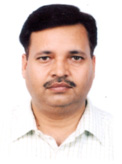
He is a senior member of SPIE and OSA-The Optical Society (OSA). He is a life member of Optical Society of India, Indian Science Congress Association, and Lasers and Spectroscopy Society of India. He is a reviewer to the journals published from OSA, SPIE, Elsevier, Springer, IEEE, IEE, IOP, CSIR, Hindawi Publs.
Editors
Nirmalya Ghosh
Nirmalya
Ghosh is a physicist with specialization in optical physics and
photonics. He received his PhD degree from Raja Ramanna Centre for
Advanced Technology (RRCAT), Indore, a Department of atomic energy
unit, India, where he had also held the position of Scientist
during 1998 - 2007. Subsequently, he conducted his postdoctoral
research at University of Toronto, Canada. He then joined Indian
Institute of Science Education and Research (IISER) Kolkata, India
in 2010 and is currently Professor in the Department of Physical
Sciences, IISER Kolkata. He heads the Bio-optics and Nano-photonics
(BioNap) group at IISER Kolkata. Dr. Ghosh has made several key
contributions in the forefront areas of plasmonics, nano-optics,
spin (polarization) optics and biophotonics. He
has
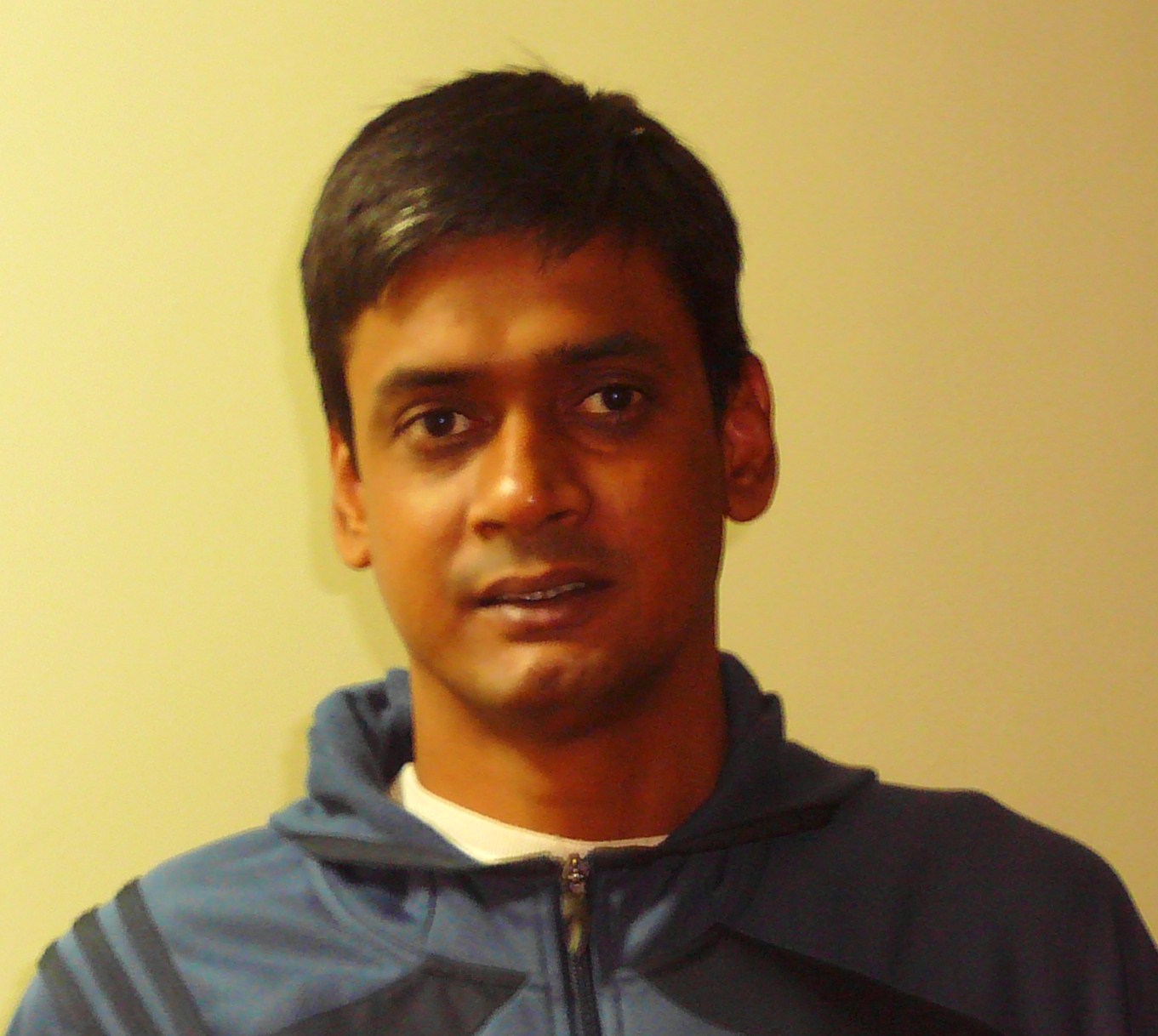
authored more than seventy five papers in peer-reviewed international journals, which have received over three thousand citations with h-index of twenty eight. He has also written several invited reviews, book chapters and text book in the area of optics and photonics. He has served as editorial board member of a number of journals including Scientific Reports, Current Nanomaterials etc.
Ping-Heng Tan
State
Key Laboratory for Superlattices and Microstructures,Institute of
Semiconductors,
Chinese Academy of Sciences, Beijing 100083,China
CAS Center of Excellence in Topological Quantum Computation, and College of Materials Science
and
Opto-Electronic Technology, University of Chinese Academy of
Sciences,
Beijing
101408, China
E-Mail :
phtan@semi.ac.cn
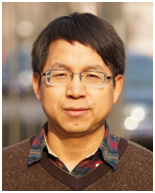
Ping-Heng Tan is a Professor at Institute of Semiconductors, Chinese Academy of Sciences. He obtained his B.S. at Peking University and completed his Ph.D. at Chinese Academy of Sciences. His current research focuses on the optical properties of two-dimensional layered materials. He has published over 160 peer-reviewed papers in scientific international journals. Some of them have been published in Nature Materials, Nature Communications, Chemical Society Review and Physical Review Letters. He was supported by NSFC for Distinguished Young Scholars in 2012 and was awarded Huang Kun prize in Physics in 2015. Now, he is the Editorial Board members of “Journal of Raman Spectroscopy”, “Semiconductor Science and Technology”, and “npj 2D Materials and Applications”. Recetly he has joined as Editor of Asian J Phys. During International Conference on Spectroscopy of Biomolecules and Advanced Materials, Oct 4,-7, 2017, at Hotel Haweli, Alappuzha. He was awarded Dayawati Rastogi Lecture Award.
Alika Khare
Currently Prof Alika Khare is with Department of Physics, Indian Institute of Technology Guwahati, Guwahati, India. She has published more than 100 papers in Refereed journals and has delivered many Invited Lectures. She has completed a number of Sponsored Research Projects and has been guiding to a number of students to obtain their Ph D Degree. Her field of interests are Laser and Photonics, Non linear Optics, Laser spectroscopy, Laser induced plasma, Laser ablation, Pulsed laser deposition of thin films and Instrumentation.
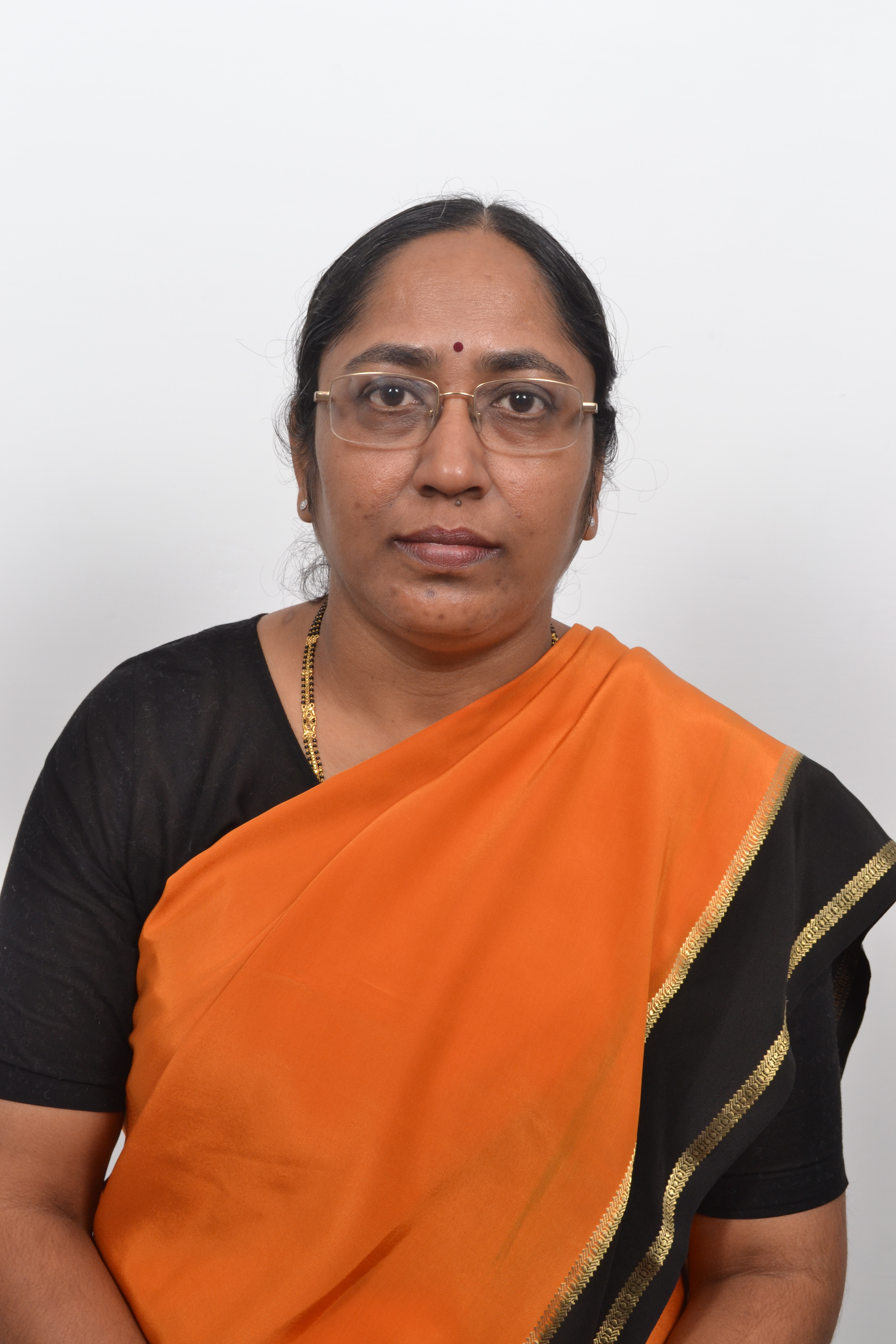
Pier Carlo Ricci
Pier Carlo
Ricci is Associate Professor at the Department of Physics of the
University of Cagliari. He is co-author of more than 100 works in
international journals with referees, and 3 international patents.
He is also reviewer for numerous International Scientific Journals
(Among the others, Scientific Reports, Nanoscale, Nanoletters, J
Phys Chem, J of Raman Spectroscopy, Physical Review, J Appl Phys)
and is Editorial Board Member for the “Open Condensed Matter
Physics Journals” and “American Journal of Materials Science and
Technology”. More than 25 personal oral contributions to
international conferences. He was Chairman of the 10th
conference on Silica and related defects, Cagliari 2014; and
Chairman of the Symposium E at the E-MRS Conference (Lille, 2
-6 May 2016): “Substitution of critical raw materials: synthesis,
characterization and processing of new advanced materials in
optoelectronic and magnetic devices” and Member of the Scientific
Board of the SPIE conference “Nanotechnology” Barcelona
8-11,
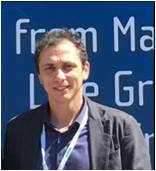
May 2017 Dr Ricci participated in numerous national and international collaborations within research project funded by national and international institutes. He was Invited Scientists at the Universidad de Castilla y la Mancha in July 2017, at the George-August University in 2014, Invited researcher at the University of Ottawa – Physics Department in 2006, UTM (Universitat Tecnologica Moldovan) Chisinau (Moldavia) in 2000, 2001, 2002. Across different positions in National Research projects, he was also the project leader of the research program “Optical properties of rare earth doped crystalline oxide for photonic applications” from the RAS (Regione Autonoma della Sardegna) and European community through the Grants in aid for Young Researcher, L.R. no. 7, 2007, no. CRP 2_539. and leader of the research program “Structural characterization of crystalline oxides for photonic and high energy physics applications” at the Materials Science Beamline European Syncrotron Max Lab. Recently, Pier Carlo Ricci was financed by the Deutscher Akademischer Austauschdienst (German Academic Exchange Service) research program “Quantitative photoluminescence in gan-based nanostructures” at the Georg-August University of Göttingen (2012).
He was
Project leader of the European Action group RESET
(http://reset.dsf.unica.it/), and several other Projects.
Prof Ricci is Member of the National expert panel for the valuation
of the Italian National Grants for young researchers “Rita
Levi Montalcini”. He is also having collaboration with several
industries. His present areas of interest are :Development and
characterization of advanced materials for photonics, and, in
particular, high-gap matrix doped with rare earths used in the
field of lasers and scintillators; New thermoluminescent materials
with possible applications in optoelectronics and in nuclear
medicine; the study of the optical properties of porous glassy
matrices with applications in photonic.
Dr Rupert Young
is currently a Reader at the University of Sussex; he
graduated from Glasgow University, from where he also gained his
PhD in coherent optical signal processing. Subsequently, he was
employed within the Laser and Optical Systems Engineering Research
Centre at Glasgow, during which time he gained wide experience in
optical systems engineering and image/signal processing techniques.
He participated in two Brite/EuRam collaborative European
programmes during this time, the second with Glasgow as the
Consortium leaders. In April 1995 he took up his present post in
the School of Engineering, University of Sussex. Since he has been
at Sussex, he has continued to apply the electro-optic system
knowledge that he has gained over the last twenty years to the
solution of a wide range of problems of industrial relevance
and has been closely involved in the conception and gaining
funding for the design and build of three major systems: a
method for the full complex modulation of coherent light on a
spatial light modulator for application to
computer generated
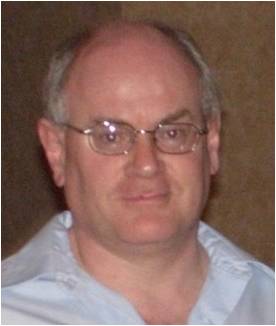
holographic display; a hybrid digital / optical correlator system for high speed pattern recognition; and a spatial light modulator based micro-stereolithography system for micro-component fabrication with feature sizes down to 5 microns. Over the last decade he has had a fruitful collaboration with faculty from the Brighton and Sussex Medical School which has resulted in methods being developed in order to provide quantitative texture analysis of medical imagery of a number of tissue types for cancer diagnostic purposes. This work has resulted in a spin-out company, TexRad Ltd, which is currently commercialising the methods developed. He has published over 250 refereed journal and conference papers on various aspects of electro-optics, digital signal processing and image processing. He has supervised to successful completion well over twenty doctoral students and he has taught several different masters level courses during his time at Sussex, including topics in digital signal processing, image processing and fibre optic communications. He is a member of the Society of Photo-Optical and Instrumentation Engineers and the Optical Society of America. From February 2006 to August 2011 he was Head of the Engineering and Design Department at Sussex University.
Dr M Alcolea Palafox is currently Full Professor in Chemical Physics Department, Chemistry Faculty, UNIVERSIDAD COMPLUTENSE DE MADRID, Spain. His major research areas are Vibrational spectroscopy of biomolecules, Quantum chemistry of biomolecules, Molecular structure of anti-virus and anti-cancer drugs, Structure-activity relationships. He has published more than 175 research papers in International Journals and have a strong collaboration with Prof Vinod Rastogi. He is Founding Member of Editorial Board of Asian J Phys and Editor of Asian Chem Letts.
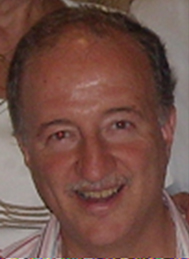
Dr. B. K. Sahoo is currently working as an Associate Professor in the Theoretical Physics Division of Physical Research Laboratory (PRL), Ahmedabad. His research interests lie in the interdisciplinary fields of atomic, nuclear and particle physics. After finishing Ph.D. formally from Indian Institute of Astrophysics (IIA), Bangalore, he has been associated with GSI, Darmstadt, MPIPKS, Dresden and KVI, Groningen in various positions. Dr. Sahoo is actively involved in many scientific and academic activities. He has delivered many scientific seminars in various Universities/institutions across the world. His commitment to the highest standards of research are reflected in his more than 90 peer reviewed papers in the leading journals of physics. He was also invited to write a book chapter on atomic clocks that will appear soon in the Handbook on Relativistic Quantum Chemistry of Springer Publication. He has received several awards both in India and abroad in recognition of his achievements. He has also been involved in teaching to the students at PRL.

Shanti Bhattacharya obtained her Ph D in Physics from the Indian Institute of Technology, Madras in 1997. Her Ph.D work was in the area of Optical Array Illuminators. She was awarded the Alexander von Humboldt award in 1998 and worked at the Technical University of Darmstadt, Germany. Her research work there included development of an optical pick-up for CD/DVD systems and design of diffractive optical elements for beam shaping of high power laser beams. She subsequently joined the MEMS division of Analog Devices, Cambridge, USA, where she worked on the design of an optical MEMS switch. She is presently an Associate Professor in the Department of Electrical Engineering, IIT Madras and has been there since 2005. Her current research interests are optical MEMS, diffractive optics and fibre interferometry.
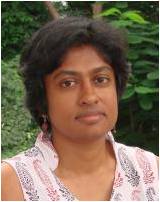
Dr. Ekaterina Michonova-Alexova
Associate Professor
Department
of Physics & Chemistry, Erskine College,
2 Washington St, SC 29639-0338, USA
E-Mail: Editor.AJP_Biophysics@aol.com
Dr Shrikrishna Pandurang ji Yawale
Dr S P Yawale is currently Professor and Head, Department of Physics and Electronics, Govt Vidarbha Institute of Science and Humanities, Amravati, India. He is Senate member of Sant Gadge Baba Amravati University and is very activiely involved in Teaching and Research. Dr Yawale has produced a number of Ph Ds and published more than 100 Research Papers in National and International Journals.
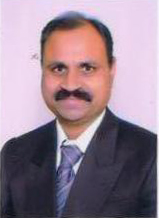
Professor
Kamal Alameh
Director,
Electron Science Research Institute
Director,
Centre of Excellence for MicroPhotonic Systems
Edith
Cowan University, 270 Joondalup Drive, Joondalup, WA, 6027,
AUSTRALIA
Tel: +61
8 6304 5836 ;Mobile: +61 415 334 876 ; Fax: +61 8 6304
2908
Email:
k.alameh@ecu.edu.au;
http://comps.ecu.edu.au

Professor Kamal Alameh has over 21 years of research experience in photonics, optoelectronics, Opto-VLSI and Micro/Nano fabrication, since receiving his PhD from The University of Sydney in 1993.
Professor Kamal Alameh is the Director of the Electron Science Research Institute, Edith Cowan University, and Director of the WA Centre of Excellence for MicroPhotonic Systems. He is also Adjunct Professor with the Department of Information and Communications at Gwangju Institute of Science and Technology (GIST), Korea, South Wales University, Wales-UK, Southeast University, Nanjing-China, and Minzuuniversity, Beijing-China.
Professor Alameh has pioneered the integration of microelectronic and photonic sciences and developed a new and practical research area, “MicroPhotonics” that achieved innovative solutions for the ICT, Agriculture, Health, Consumer Electronics, Renewable Energy, Environment, Oil and Gas, Security and Defence sectors.
Professor Alameh has also established an international network of research collaboration with world-class international research institutions. He has published 340+ peer reviewed journal and conference papers including three book chapters. In addition he has filed 26 patents over technologies and discoveries that have commercial potential. He has been invited to present at leading international conferences and workshops for more than 30 occasions and his research output had been the basis of more than 20 invited talks and 5 book chapters. He has been exceptionally well supported by successful government and industry grants totalling over $20 million dollars in funding.
Technical Editor
Nimish Dixit
Scientist
Photonics
Division
IRDE,
Raipur Road, Dehradun - 248 008, India
Ph:
91-135-2782559, E-Mail: ndixitn@gmail.com
Managing Editors
Sandeep Khanna
Indian Spectroscopy Society
KC 68/1, Old Kavinagar,
Ghaziabad-201
002, India
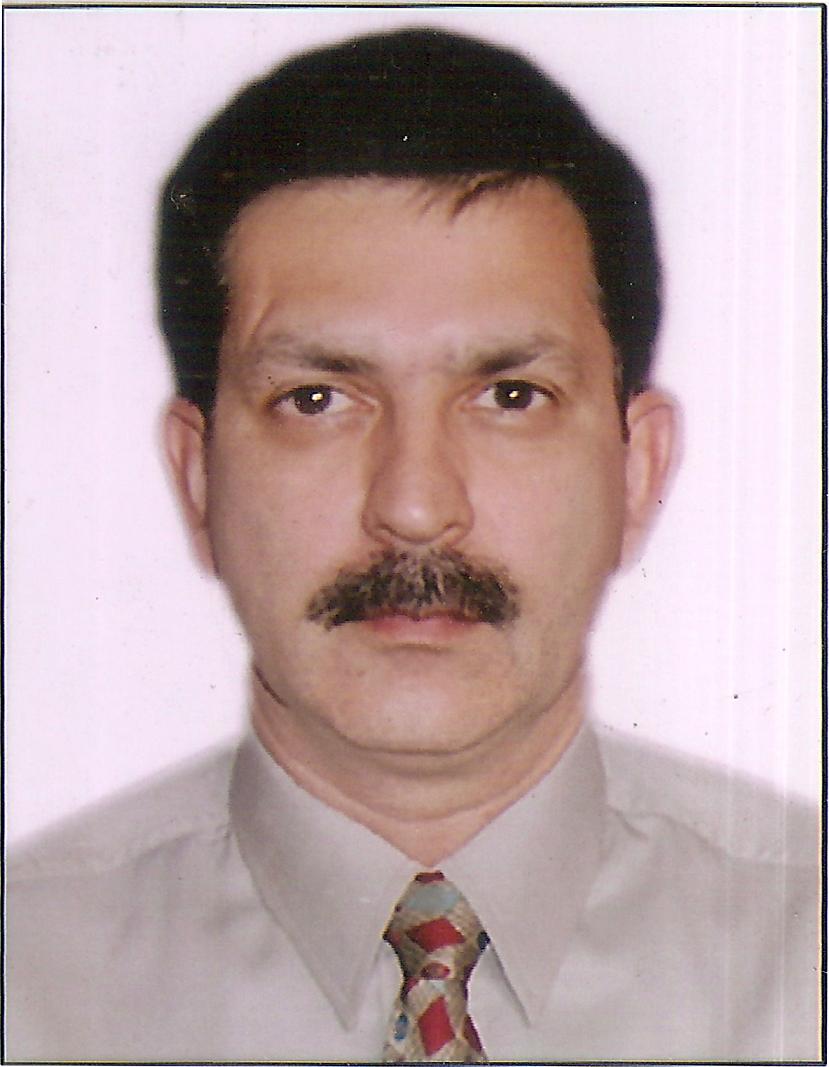
S K Rathor
Indian Spectroscopy Society
KC 68/1, Old Kavinagar,
Ghaziabad-201 002, India
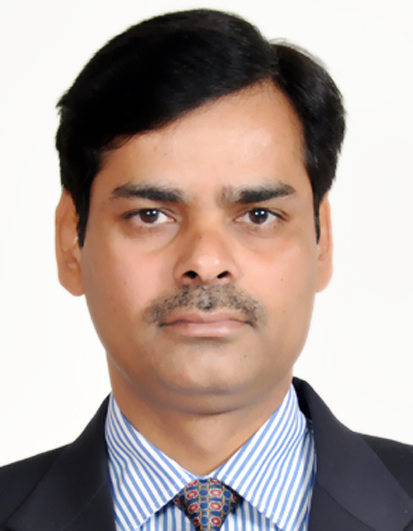
Çağrı
ÇIRAK
Assistant
Professor
Erzincan
University,
Department
of Physics
Erzincan/TURKEY
E-mail:
ccirak@erzincan.edu.tr
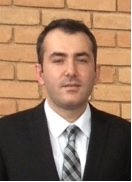
Beer Pal Singh
Managing Editor (Publications)
Department of Physics
CCS University, Meerut-250 004,
India
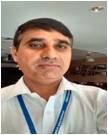
Manoj Kumar
First Floor, FF-43, Mangal Bazar,
Laxminagar Delhi-110092, India
E-Mail : asian.ajp@gmail.com
Manish Kumar
First Floor, FF-43, Mangal Bazar,
Laxminagar Delhi-110092, India
E-Mail
: asian.ajp@gmail.com
A Alexandar
M.Sc., B.Ed., Ph.D.,
Assistant Professor of Physics & Convener of ASC and NSS, Anugraha College,
Nochiodaipatti, Dindigul, Tamil Nadu 624003, India.
Mobile: +91 86103 19747; 95249 13942;
E-mail:alexphysics1@gmail.com; alexx3339@gmail.com
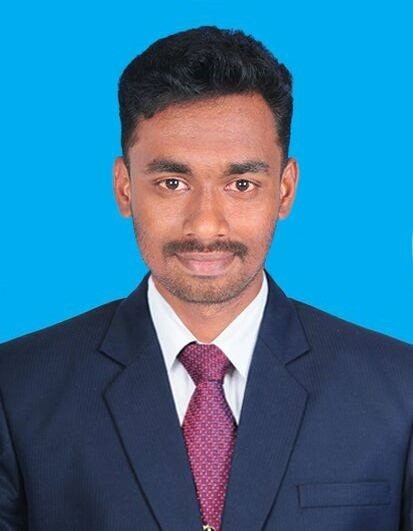
Uma Maheswari Rajagopalan
Shibaura Institute of Technology, Tokyo, Japan
uma@shibaura-it.ac.jp; Phone : +81358599704
Uma Maheswari Rajagopalan is from India and now a permanent
resident of Japan. From 2018 April onwards, she is working as a
Professor in SIT research laboratories, Shibaura Institute of
Technology. After receiving her Master’s in Physics from the
American College, Madurai in 1985 and Master’s in Applied Optics
from the Indian Institute of Technology, New Delhi, India in 1987,
she got her Ph D in Engineering from Hokkaido University in
1991.
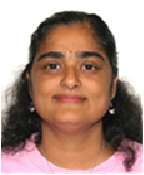
She
also holds a master’s degree in Education with specialization in
Applied Linguistics that she obtained from Open University, the
United Kingdom in 2014. She worked as a postdoctoral visiting
researcher from 1992 to 1993 in the Department of Physics, Joensuu
University (currently called as University of Eastern
Finland).
From 1993 to 1998, she worked as a postdoctoral researcher in ‘Ohtsu Photon control project’ of Kanagawa Academy of Science and Technology, Kawasaki and worked on the development of ultra high-resolution optical microscope. From 1998 to 2005, She was a research scientist in Brain Science Institute (BSI), RIKEN, Japan and a research consultant from 2005 to 2013 in the same institute. During her time in BSI, she proposed and implemented Optical Coherence Tomography for live imaging of brain functions and succeeded for the first time in the world. From 2012 to 2017, she worked as Science and Technology adjunct lecturer at the national University of Electro-communications, Tokyo. From April 2014 to till March 2018, she worked as an assistant professor in the Department of Food and Nutrition studies at Toyo University. Her research interests include application of optical technology to biology and cognitive neuroscience apart from genre-based pedagogical approaches to teaching subjects of science and technology to non-native students. She is currently doing research on the application of laser speckle based measurement technologies to the determination of shelf life of fruits, environmental stress on plant growth, probe microscope for studying plant wall dynamics and wearable brain imaging technologies in attention and memory studies.
Almabrok Essa received his BS degree in electrical and electronic engineering from Sirte University, LY, and his MS degree in electrical and computer engineering from the University of Tripoli, LY. He has worked as a Lecturer at Al Jabal Al Gharbi University, Gharyan, LY from 2007-2010. He recently received his PhD in electrical and computer engineering from the University of Dayton, Dayton, OH, USA. He has authored and coauthored more than 35 publications, including refereed journals and conference proceedings in the field of computer vision, image processing, pattern recognition, machine learning, and remote sensing. Dr. Essa also serves as a technical reviewer for several signal processing journals and international conferences. He is a member of IEEE and SPIE.

Dr. Mohd. Shkir received his B.Sc. and M.Sc. in Physics from M.J.P. Rohilkhand University (MJPRU), Bareilly, India and his doctor of philosophy (Ph.D.) from Jamia Millia Islamia (a central university), GOI. He did his post-doctoral (PDF) research from Crystal Growth Lab (CGL), Universidad Autónoma de Madrid (UAM), Madrid, Spain in the laboratory of Prof. E. Diegues. Before joining to King Khalid University he worked in University of Delhi (DU). He currently holds the position of Assistant Professor in Physics, at King Khalid University, Abha, KSA. Dr. Shkir has published over 120 research papers in high impact national and international journals with over 1400 citations and has one patent [ES2527976 (A1) ― 2015-02-02].His current fields of interest are: nonlinear optics, nanotechnology and thin film fabrications for optoelectronic device applications..
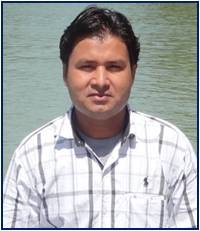
Academics
Dr. B Maruthi Manoj obtained his Ph D in Physics from the
University of Hyderabad. He did his post-doctoral research from the
University of Electro-Communications, Japan. He joined as Assistant
Professor in the Department of Physics, IIT Kharagpur in 2013. He
received DST-Inspire Faculty Award in 2013. His current research
interests are in Singular Optics, Correlation Optics, Spectral
Interferometry and Optical Holography.
Website:
http://www.iitkgp.ac.in/department/PH/faculty/ph-bmmanoj
ORCID: https://orcid.org/0000-0003-0442-3599
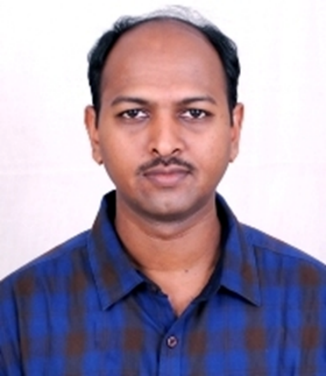
Abdel-Baset Ibrahim
Managing Editor (Academics)
School of Physics and Material Studies, Faculty of Applied Sciences,
Universiti
Teknologi MARA, 40450 Shah Alam, Selangor,
Malaysia
E mail: abdelbaset.ibrahim@gmail.com

Associate Editor
Dr N Vijayan
Associate Editor
N Vijayan received his Bachelor degree from Bharathidhasan University through AVVM Sri Pushpam College, Poondi, Thanjavur and Masters from St. Josephs College, Trichirappalli. He carried out his Bachelor of Education through Govt College of Education, Pudukottai and received his Doctoral degree from Anna University, Chennai in the area of Materials Science. After completion of his research programme at Anna University, Chennai, he joined at CSIR-National Physical laboratory, New Delhi, India during August 2004 as a Jr. Scientist. His main area of research interest is the Growth of high quality Single Crystals for Technological Applications.

He has grown variety of Single crystals by Slow Evaporation Solution Growth, Melt and SR methods. After joining at CSIR-NPL, he visited Spain under Department of Science and Technology (DST) sponsored BOYSCAST programme during 2008-2009. During on deputation, he has grown very important single crystal of Cadmium Zinc Telluride by vertical Bridgman and Bridgman Oscillation techniques. He also filed a Spain patent for the System for the growth of semiconductor single crystals by variable growth rate. He also bagged many awards such as CSIR-Young Scientist Award -2007, Best Innovative Researcher Award, Prof. P. Ramasamy National Award for Crystal Growth, Bharat Excellence Award, Best Poster Presentation Award etc. He is the referee for many internationally reputed Journals (ACS, RSC, IUCR, Elsevier, Wiley Interscience). He has written a Chapter in a Book published by Wiley Interscience Publishers. He is an approved Research Guide of various universities and has been guiding research to many students for their Ph D degrees. Dr Vijayan visited many countries and attended many National and International conferences and presented more than 200 papers. Dr Vijayan has published more than 175 papers in International Journals with good impact factor. He is also one of the faculty members in ACSIR and guiding M.Tech and M.Sc students. Presently he is working as a Senior Scientist in the same organization.
Regional Managing Editor
Dr. C. Justin Raj
Science
building 207, School of Natural Sciences, Analytical
Chemistry
Dongguk
University-Seoul, 30, Pildong-ro 1gil, Jung-gu
Seoul-04620,
South Korea
Email:
cjustinraj@gmail.com; cjustinraj@dongguk.edu
Phone
No : (+82) -2 -2260-3709
Lab:
+82-10-9897-2770
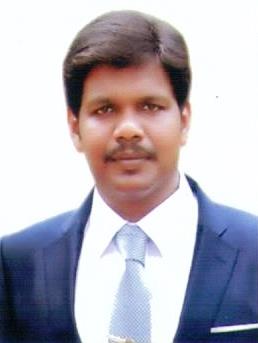
C. Justin Raj received his Ph D degree in Physics from University of Madras through Loyola College, Chennai, Tamil Nadu, India. He is recently working as an Assistant Professor in School of Natural Sciences (Analytical Chemistry) at Dongguk University, Seoul, South Korea since 2013. He was awarded with Centenary Postdoctoral fellowship from Indian Institute of Science, Bangalore and worked at Materials Research Center (2009-2011). He got Brain Korea 21 Post-Doctoral Fellowship and worked as a Postdoctoral Research Associate in School of Electrical Engineering, Pusan National University, Busan, South Korea (2011- 2013). He has authored and coauthored more than 90 publications in internationally refereed journals and more than 70 conference proceedings and serving as an active reviewer for more than 10 reputed journals. His current research interest includes nanomaterials for electrochemical energy conversion, storage and biosensors
Language Editor
G L
Gautam
Dr.
G.L. Gautam, born in 1959 at a small village called Jatoi in
Mathura District of U.P., India is currently Associate
Professor and Head in the Department of English, at Lajpat
Rai College Sahibabad, Ghaziabad. He was honoured with the title of
a sincere and dedicated teacher by National Assessment and
Accreditation Council. He publishes poetry both in Hindi and
English. He has translated Hindi poetry of reputed poets into
English. He has written a book on Mulk Raj Anand and has done a
project on Raja Rao. He chaired an academic session at Lucknow
University and presented a paper at Venice in Italy in 2008. His
style of delivering the text of his research paper was appreciated
at Oviedo University in Spain in 2017. Recently he has joined AJP
as Language Editor.
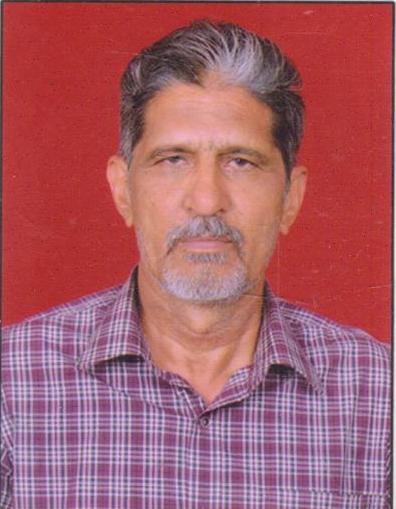
Assistant Editor
Dr Shivakiran Bhaktha B N received his Masters of Science (Physics)
from Sri Sathya Sai Institute of Higher Learning, Prasanthi
Nilayam, India in 2003 and Ph D. from the School of Physics,
University of Hyderabad, India in 2006. As a part of his
post-doctoral fellowship he has visited various laboratories:
Université des Sciences et Technologies de Lille, France, CNR-IFN,
CSMFO Lab., Trento, Italy, LPMC-CNRS, Nice, France and TIFR,
Mumbai, India. His areas of interest include waves in random media,
glass photonics, glass-ceramics, photonic crystals, microresonators
and optofluidics. He joined the Department of Physics, Indian
Institute of Technology Kharagpur, India in 2011 and is currently
serving as an Associate Professor. More details can be found
on:
Website:
http://iitkgp.ac.in/department/PH/faculty/ph-kiranbhaktha
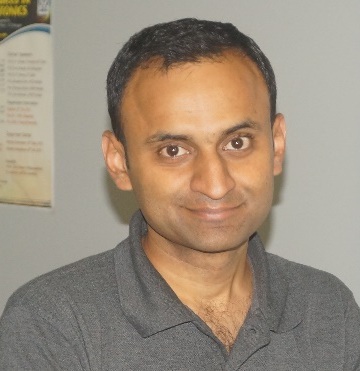
ORCID: https://orcid.org/0000-0003-4846-8262
A Milton Franklin Benial
Dr. A. Milton Franklin Benial is working as an Associate Professor in the PG and Research Department of Physics, N.M.S.S.V.N. College, Madurai, Tamil Nadu since 1989. He received his Ph.D., from Madurai Kamaraj University, Madurai, Tamil Nadu, India, in the year 2003. He carried out his postdoctoral studies in the field of ESR and biomedical imaging in the Department of Bio-functional science, Kyushu University, Japan under JSPS programme from the year 2004 to 2006. He has received young Investigator award from SFRR, Japan in the year 2006. He has also carried out postdoctoral research under UGC research award scheme from the year 2012 to 2014.

He has
successfully completed UGC major and minor research projects.
Twelve students have been awarded Ph.D., and six students are
pursuing Ph.D. under his guidance. He has published 102 research
papers in reputed international journals and presented 60 research
papers in international conferences. He has also authored a book
chapter in Advanced Environmental Analysis (Volume I), Royal
Society of Chemistry publications. His current research focused on
Vibrational spectroscopic, quantum chemical and molecular docking
studies on bio-active molecules.
© ANITA PUBLICATIONS
All rights reserved
Designed & Maintained by
Manoj
Kumar